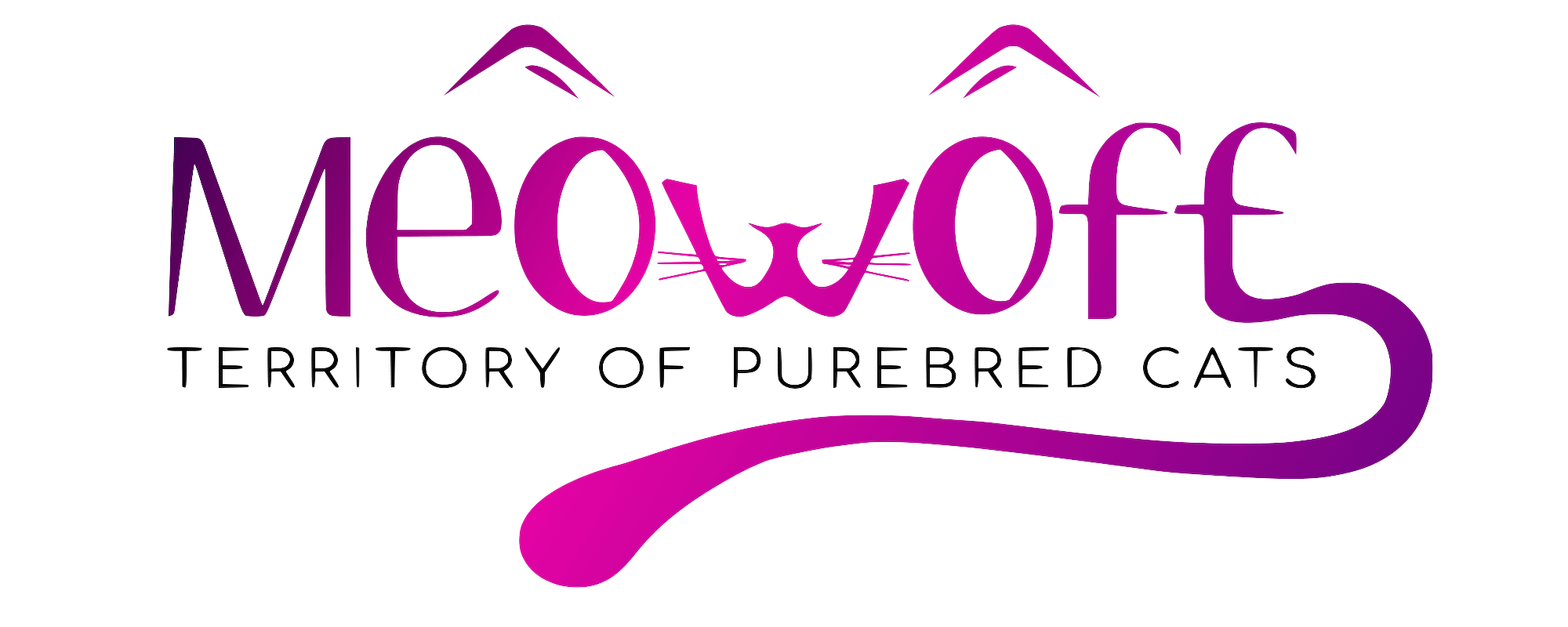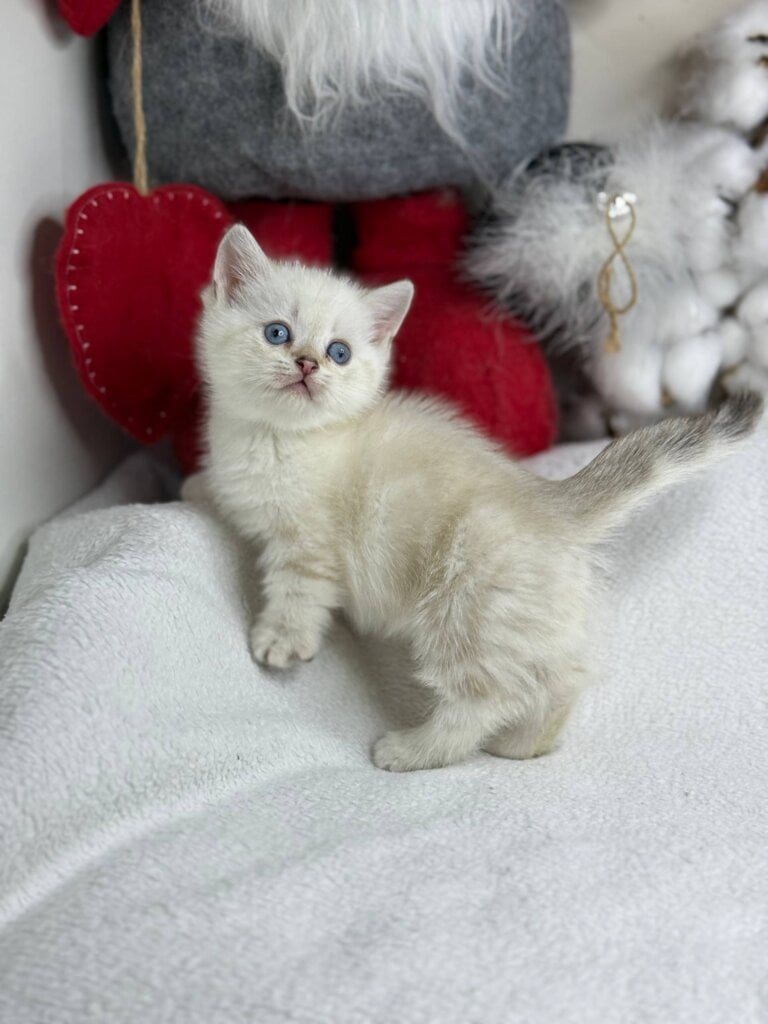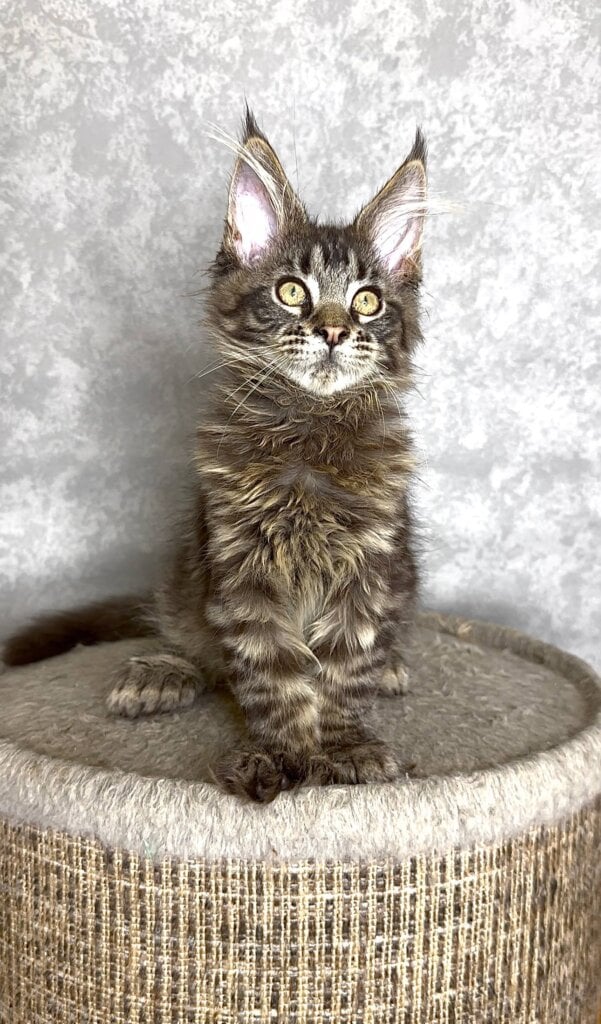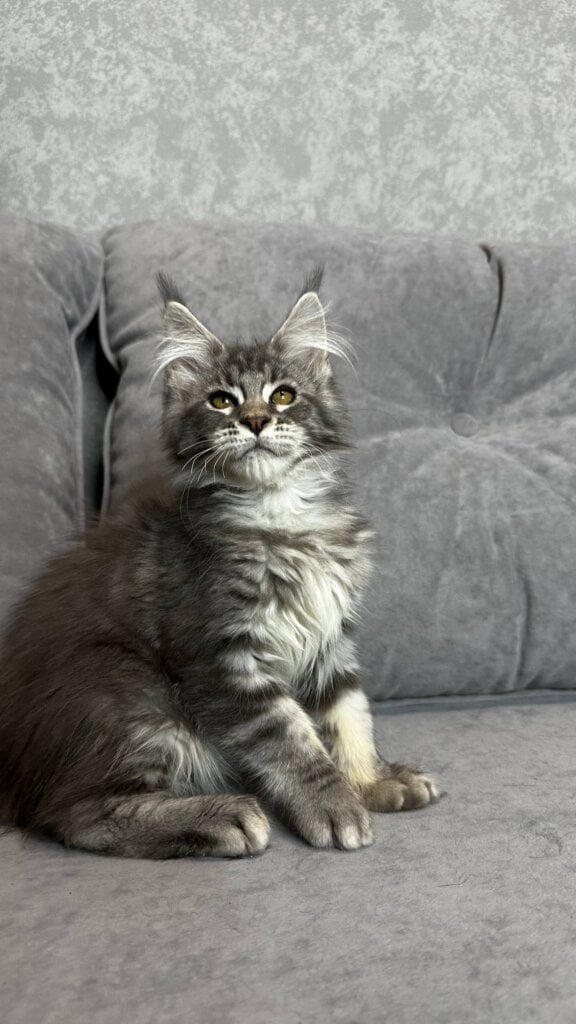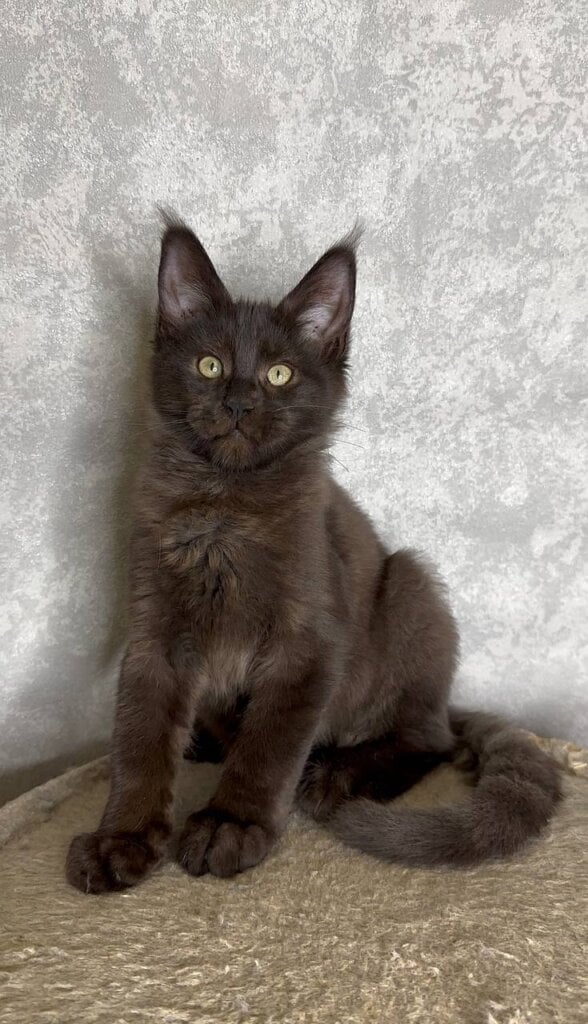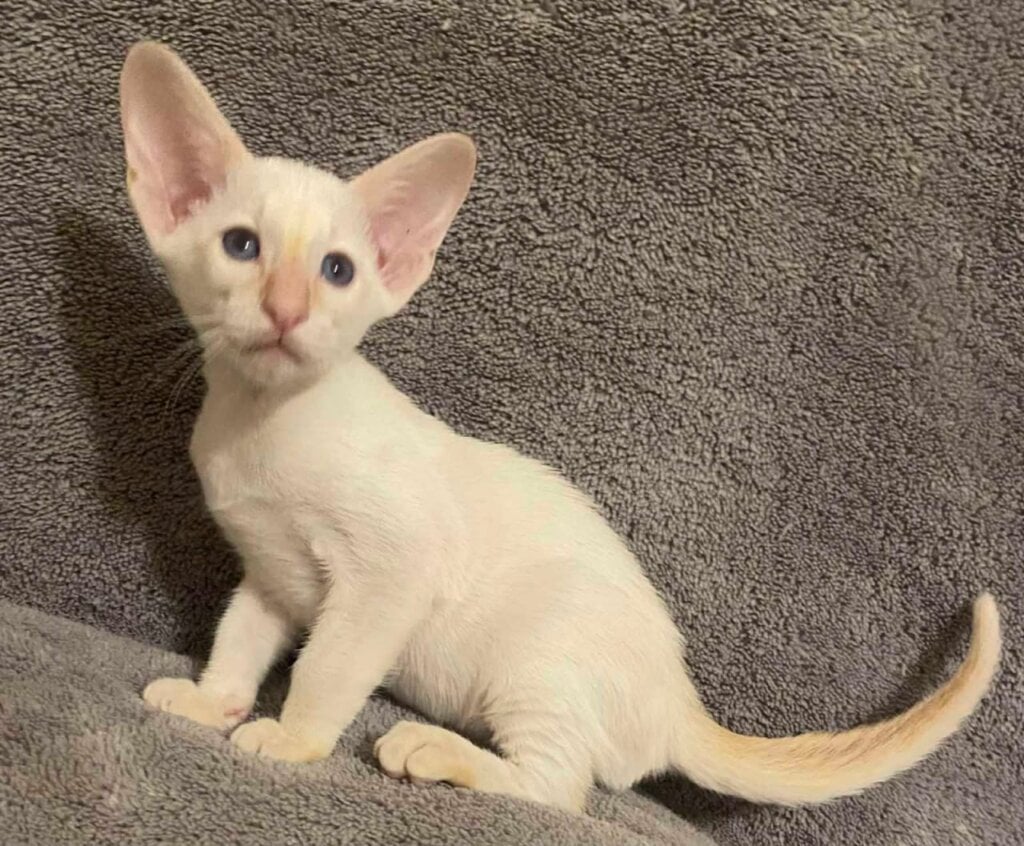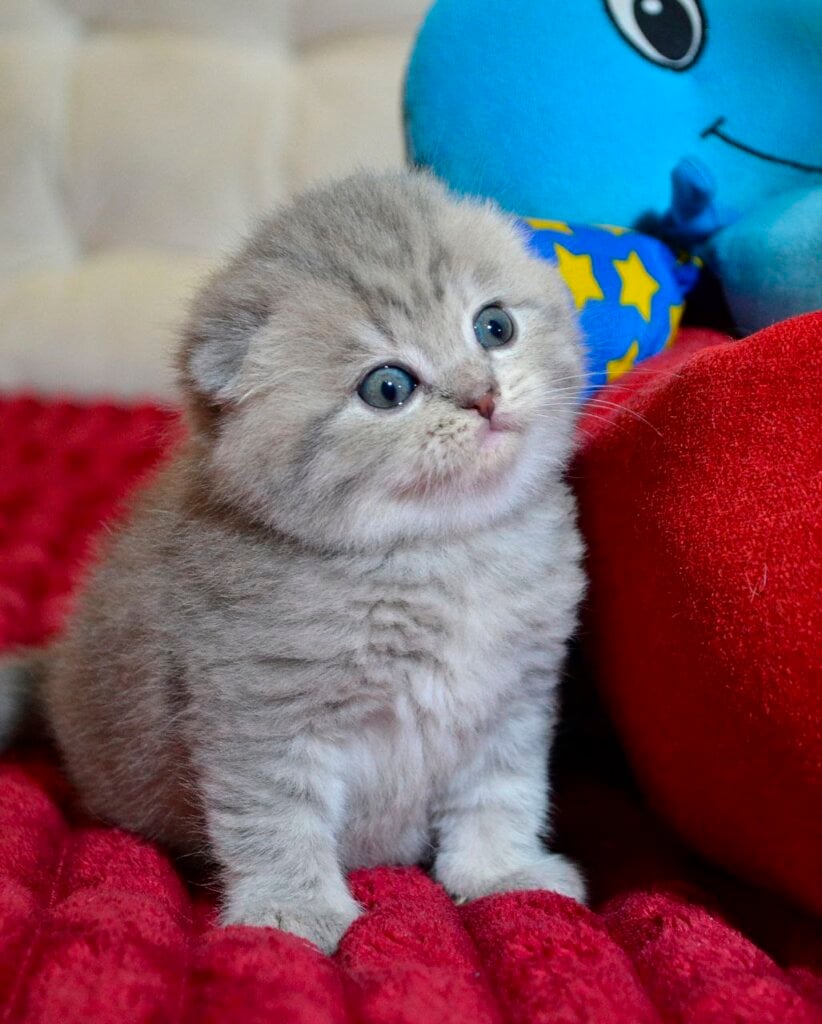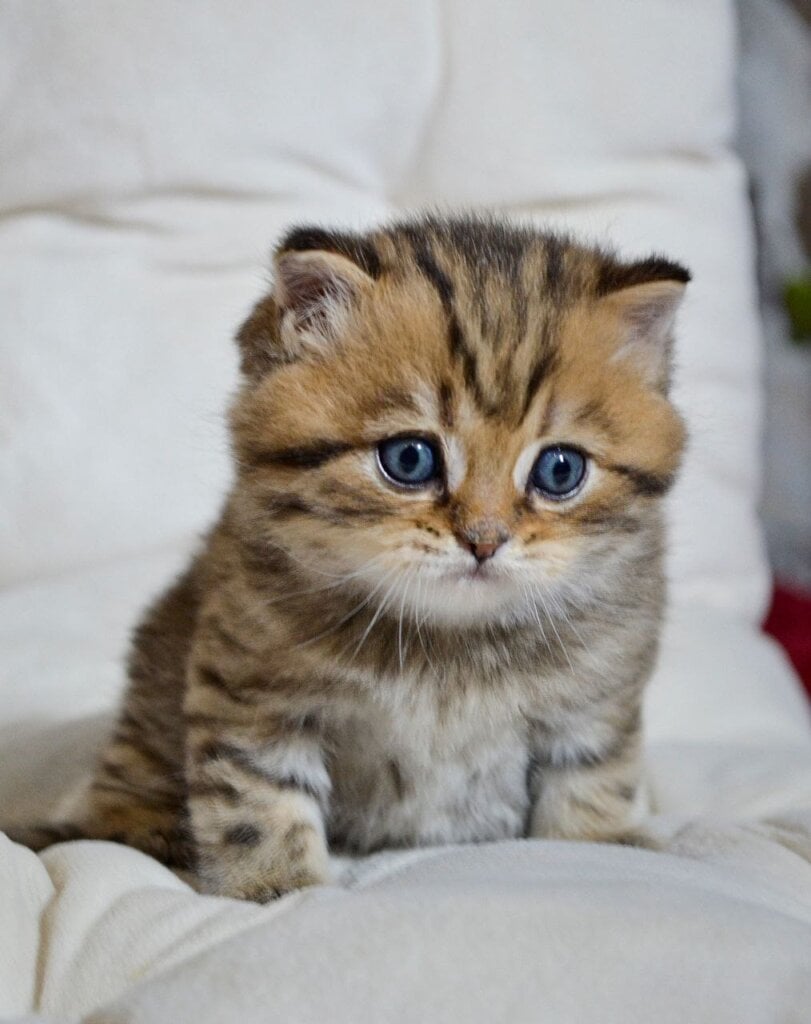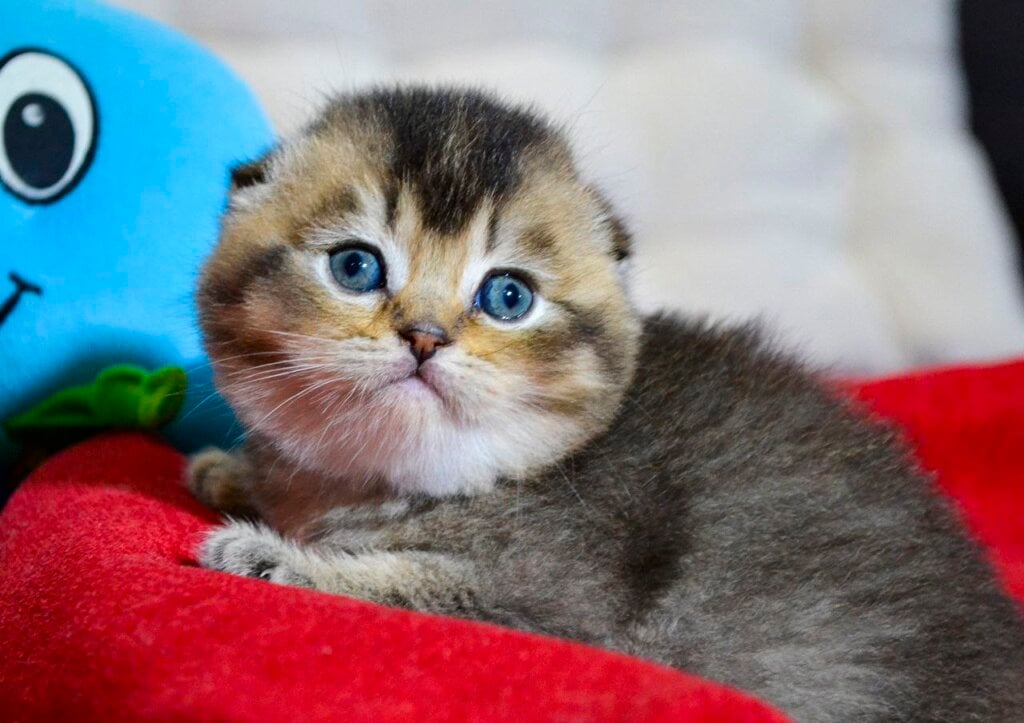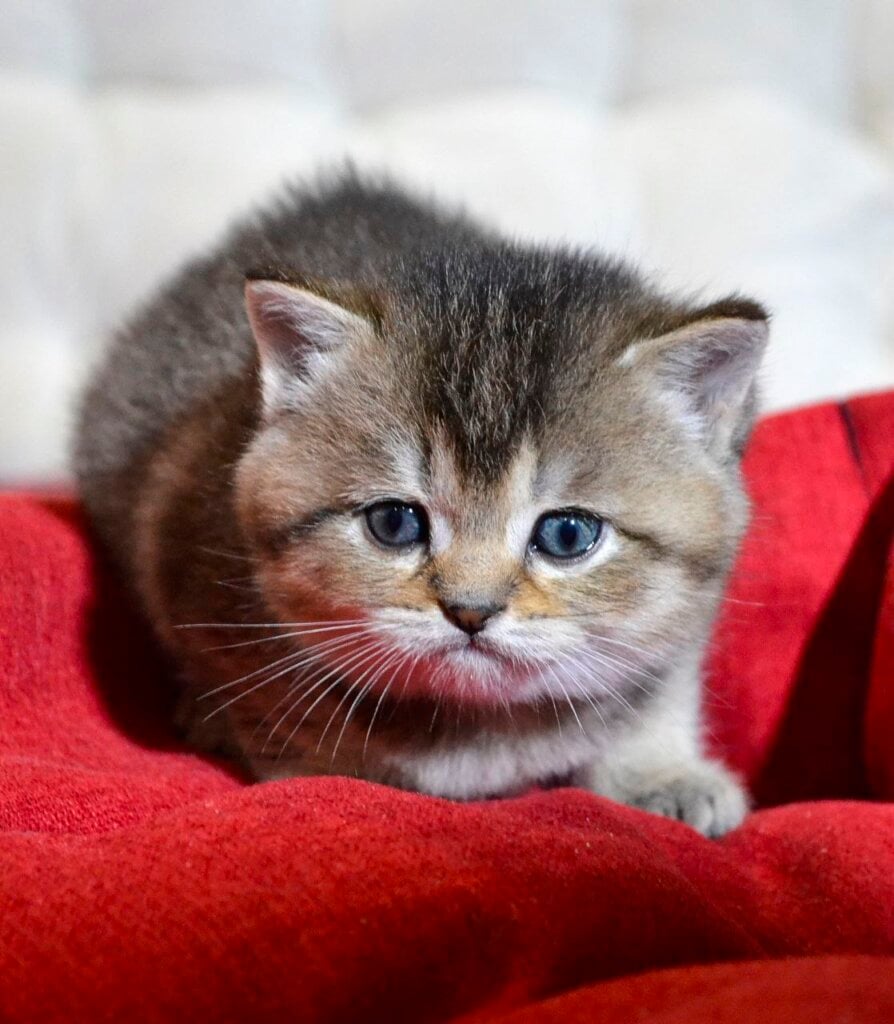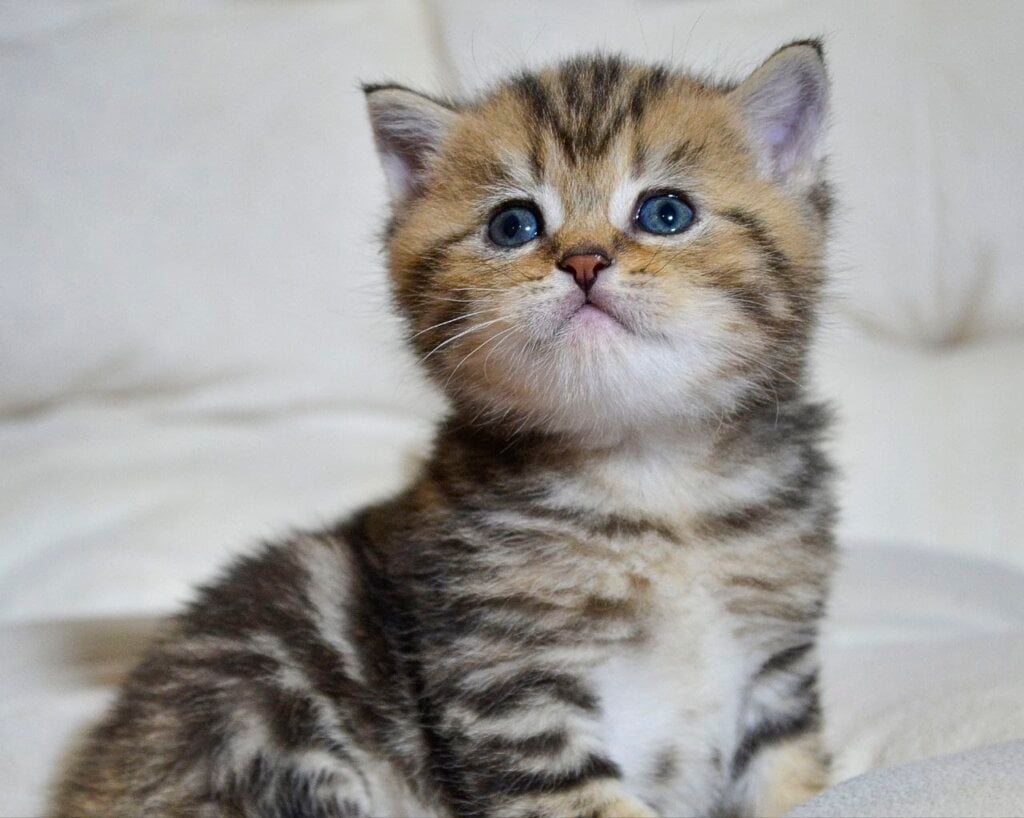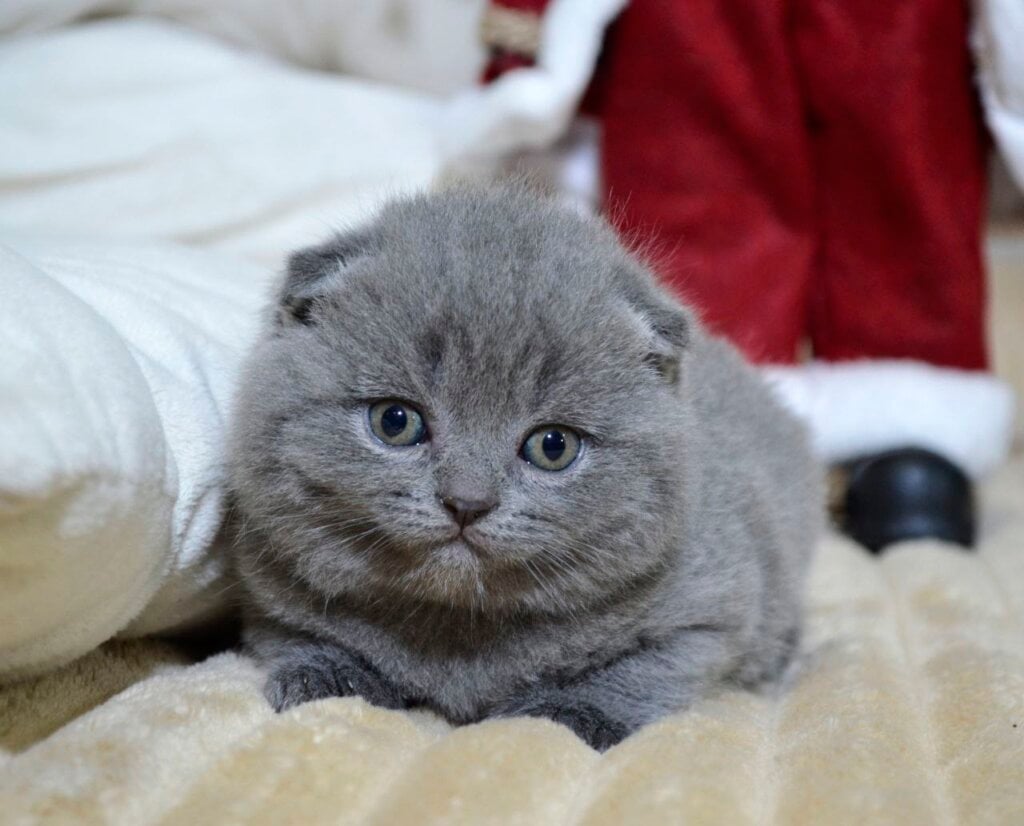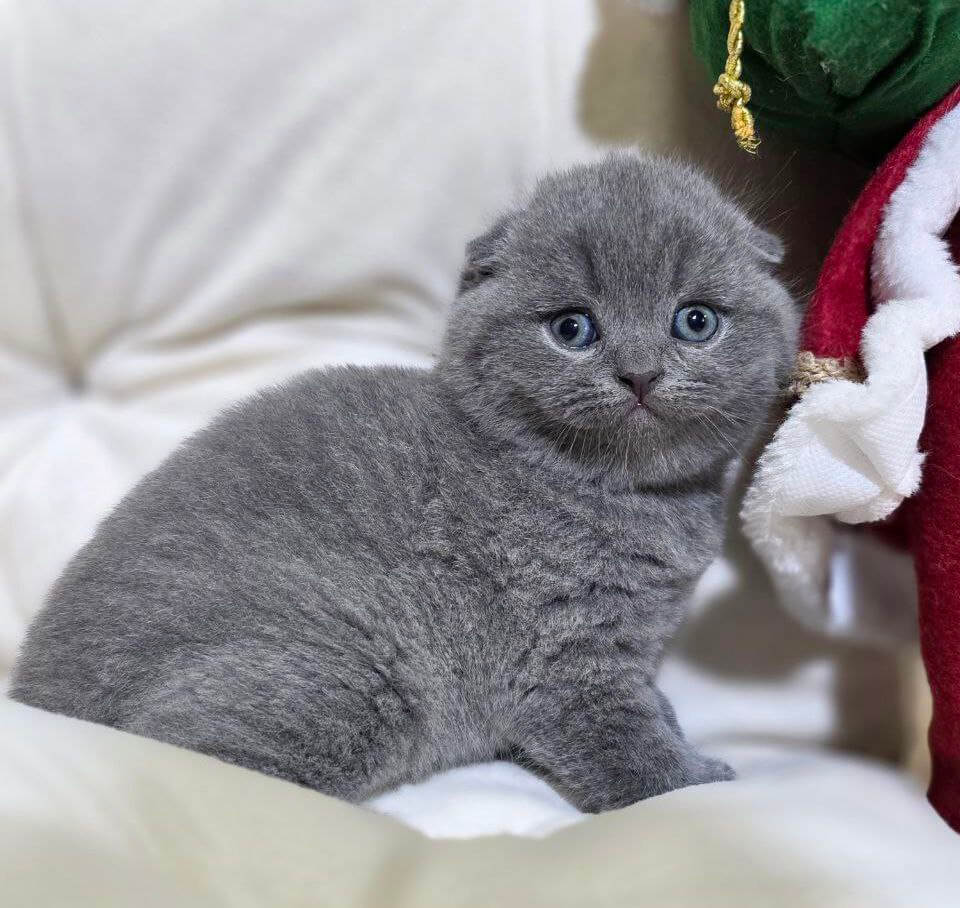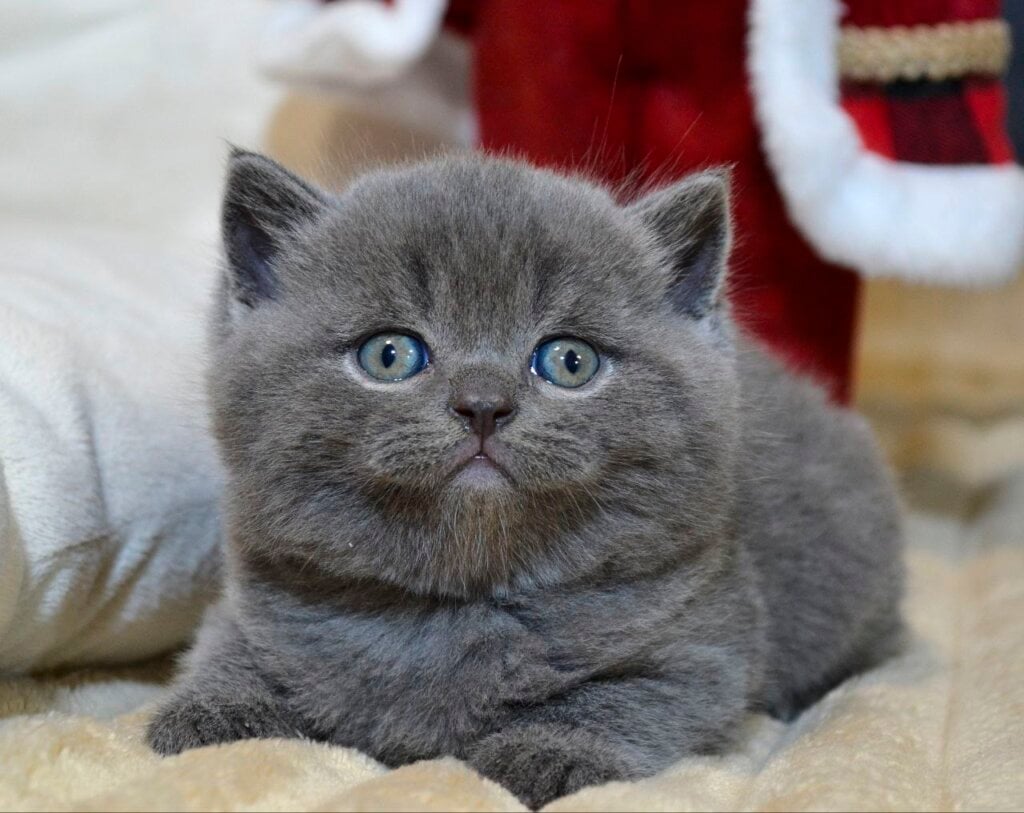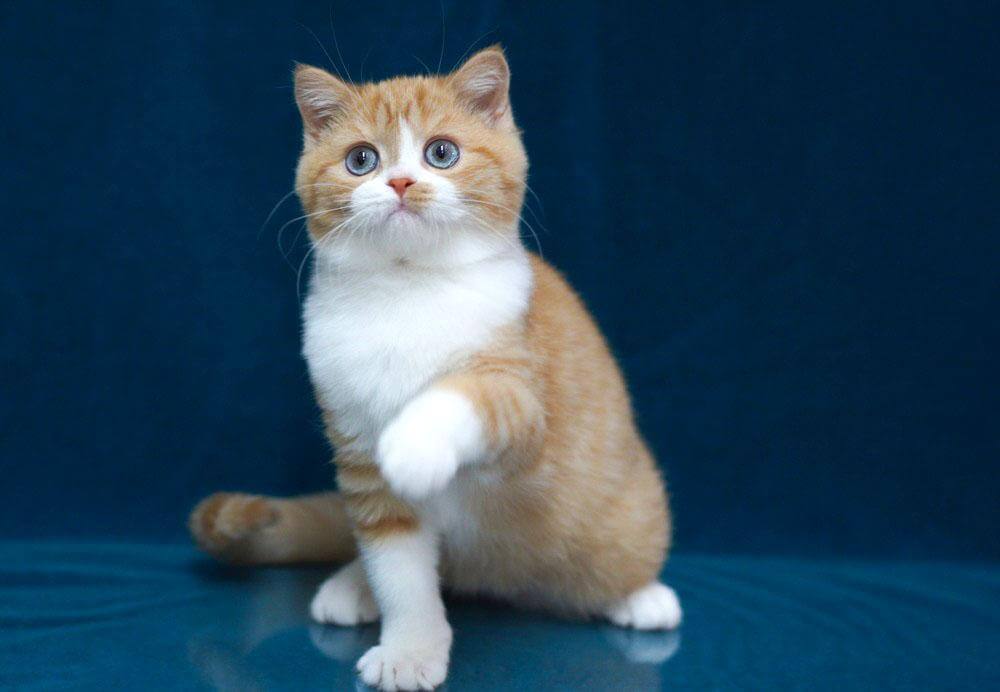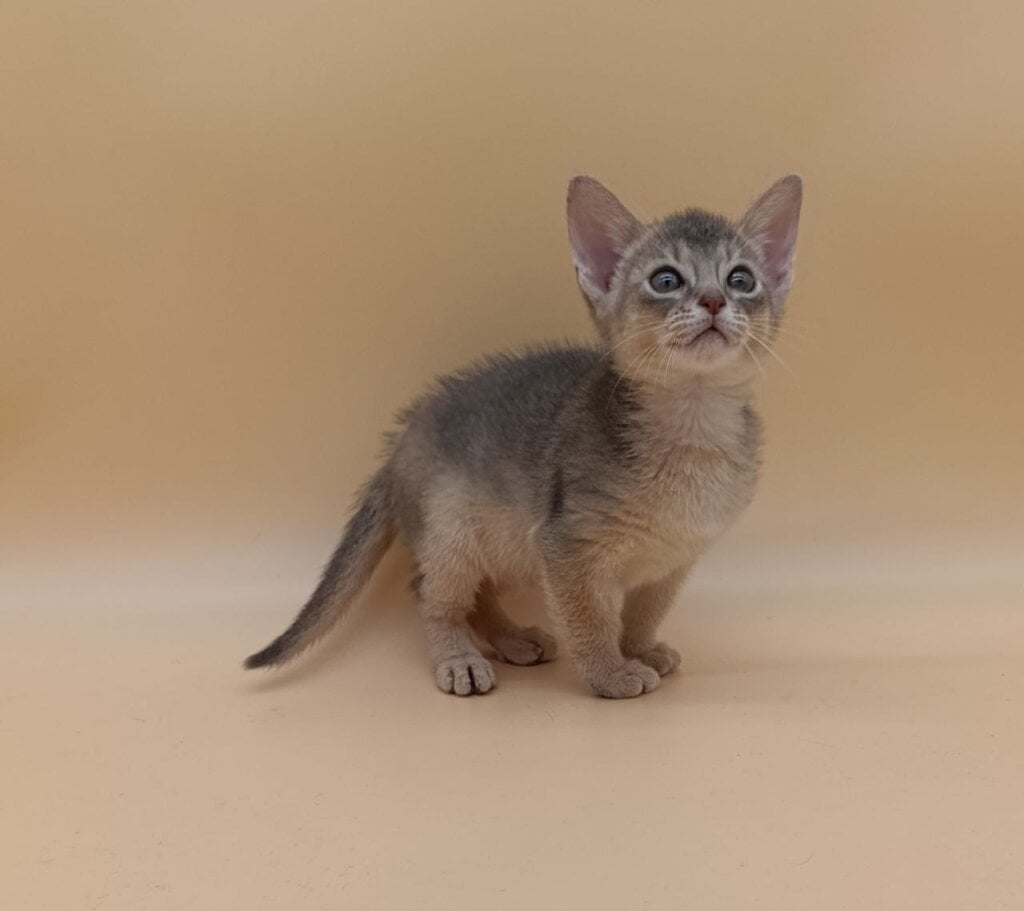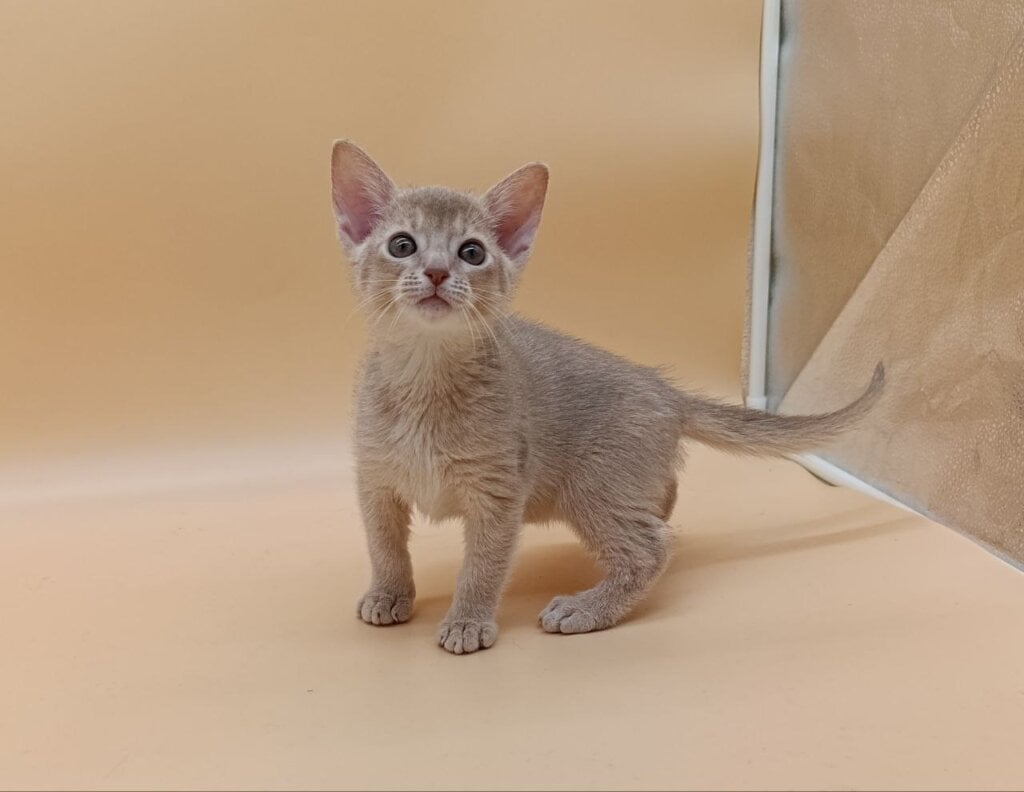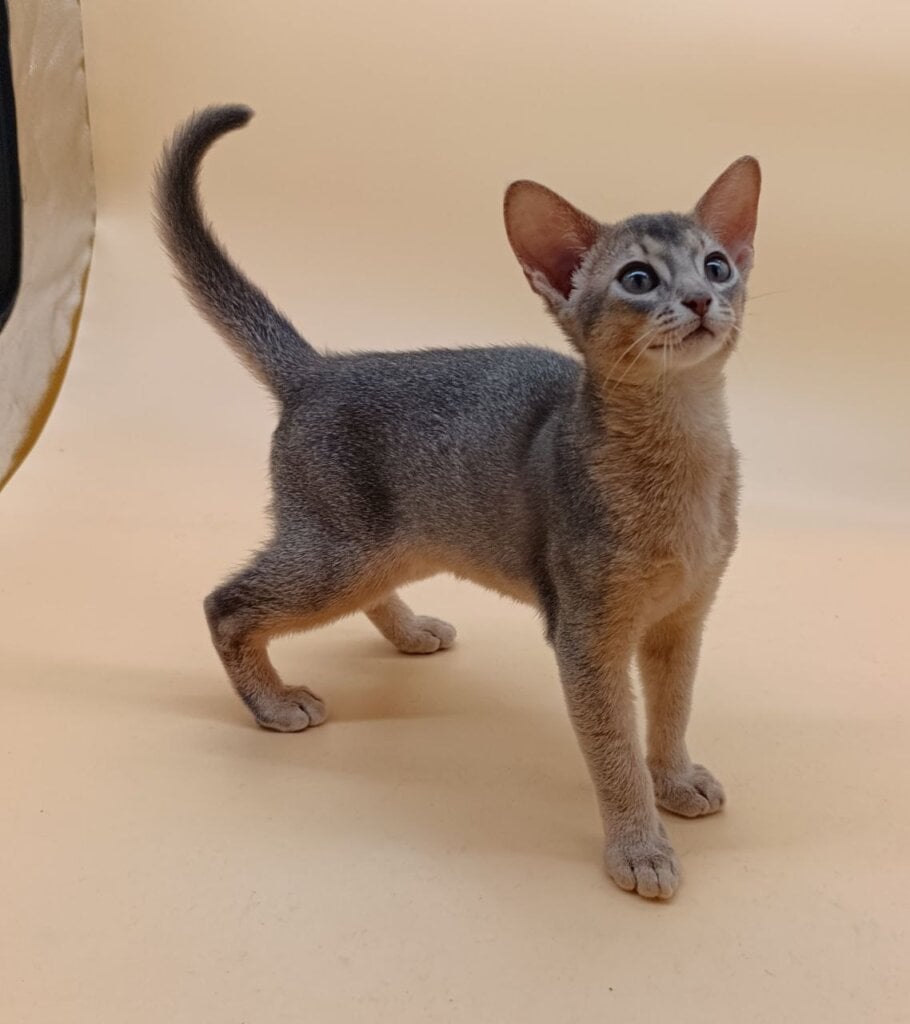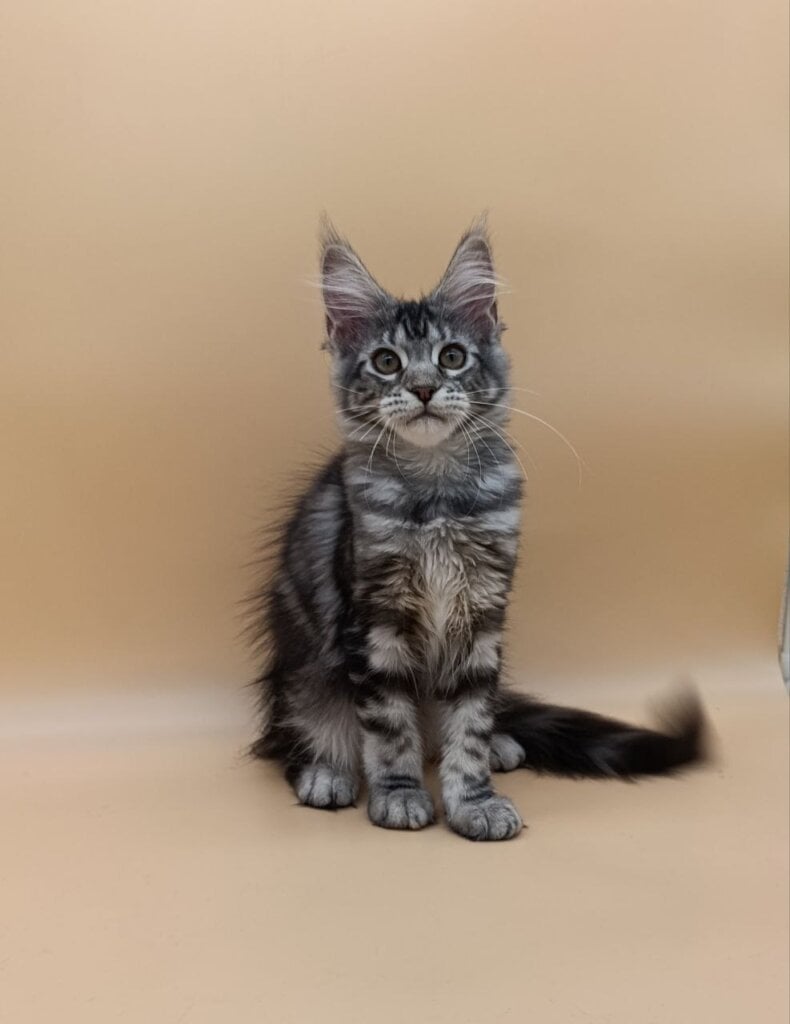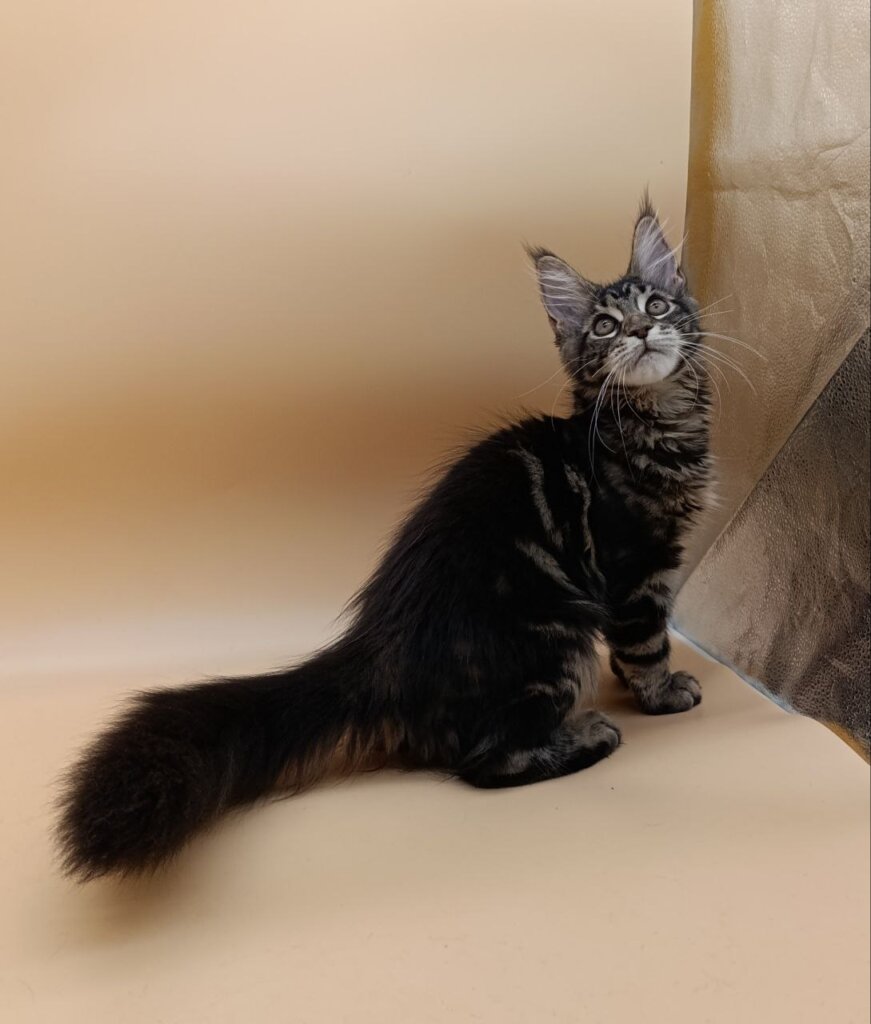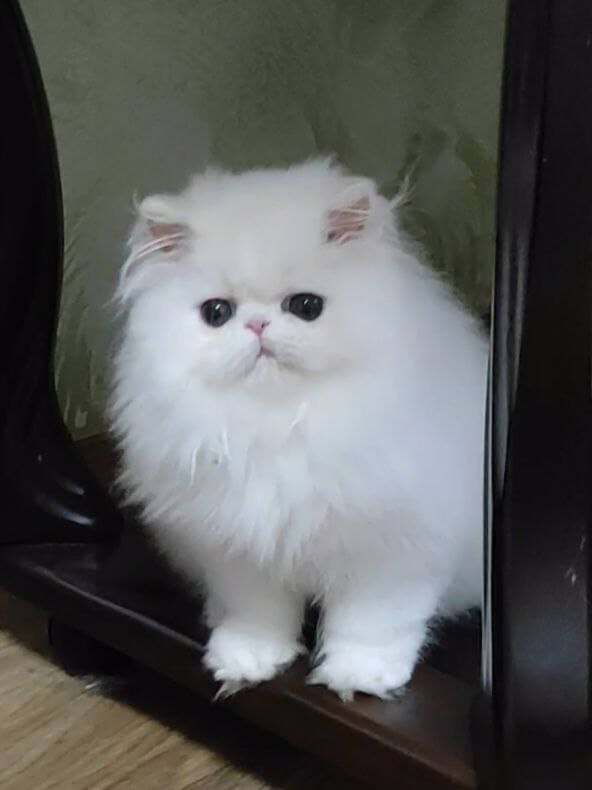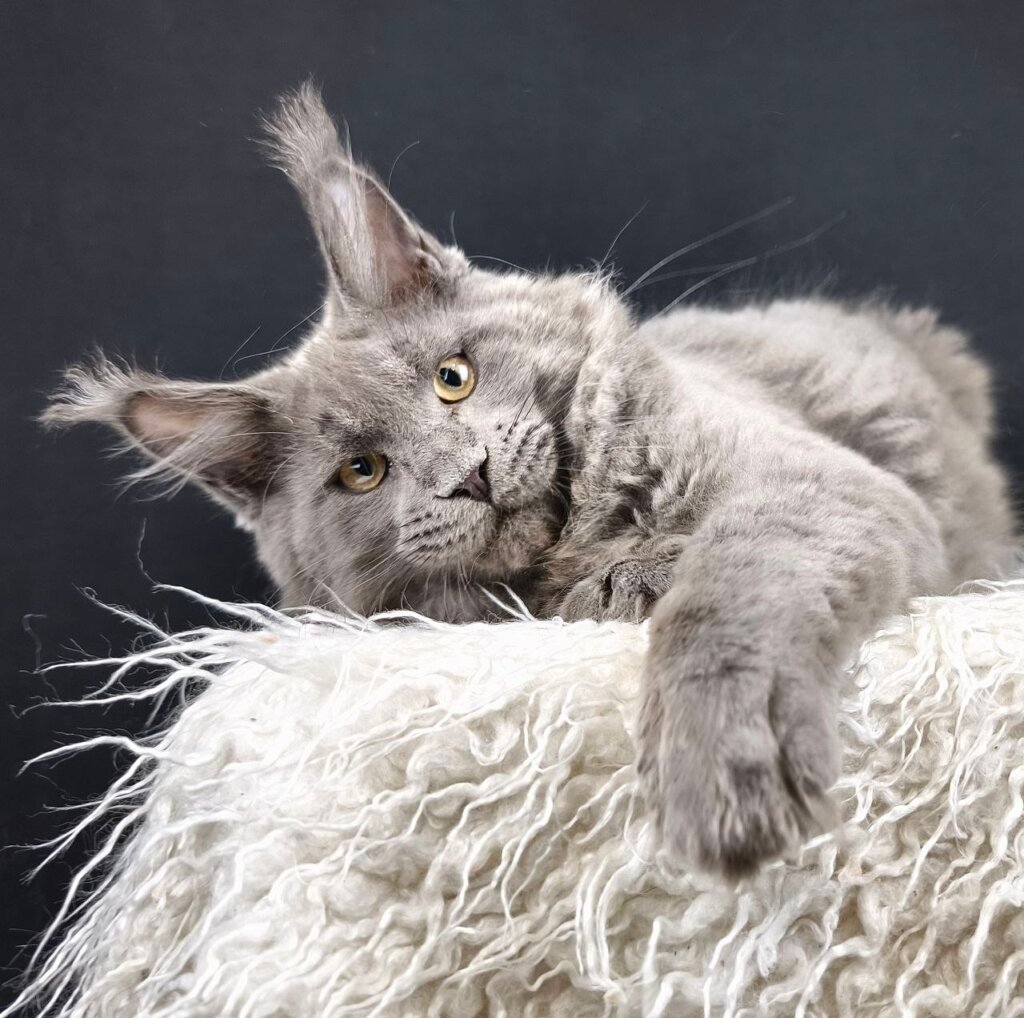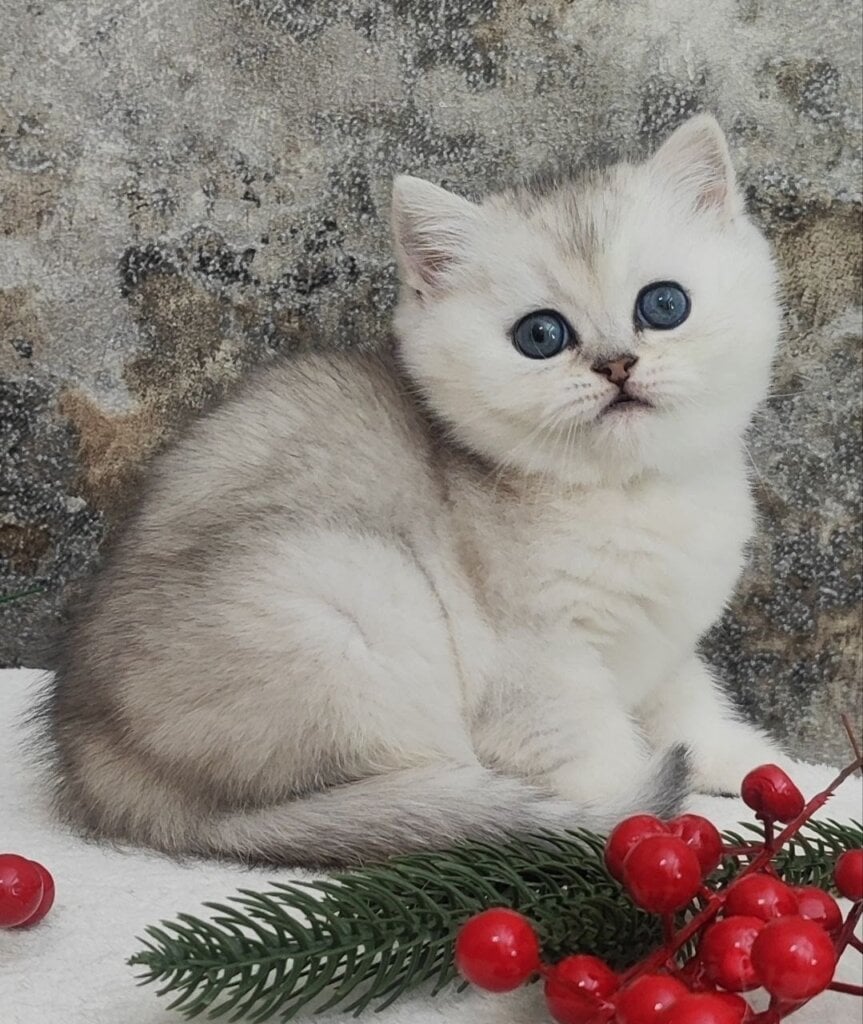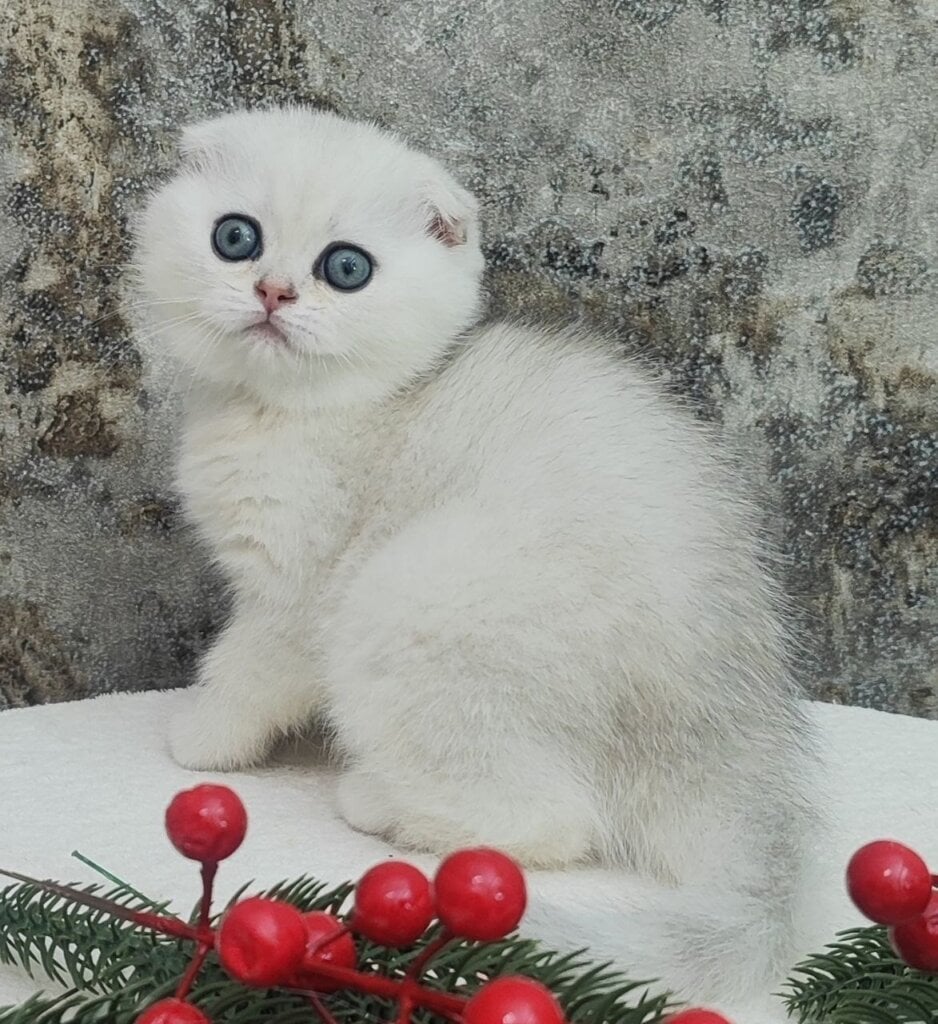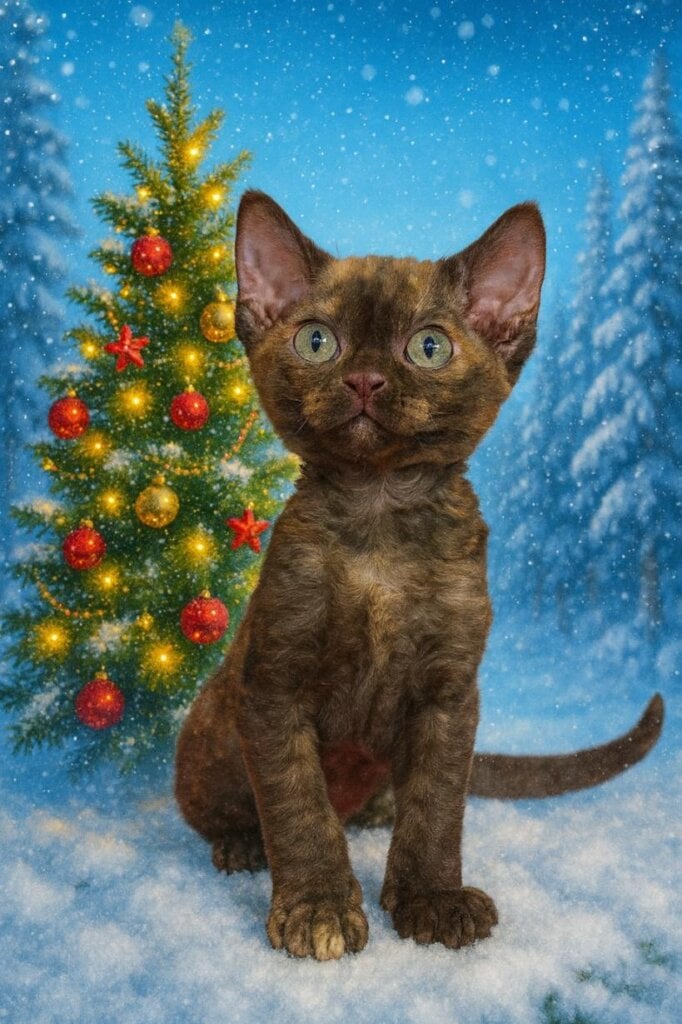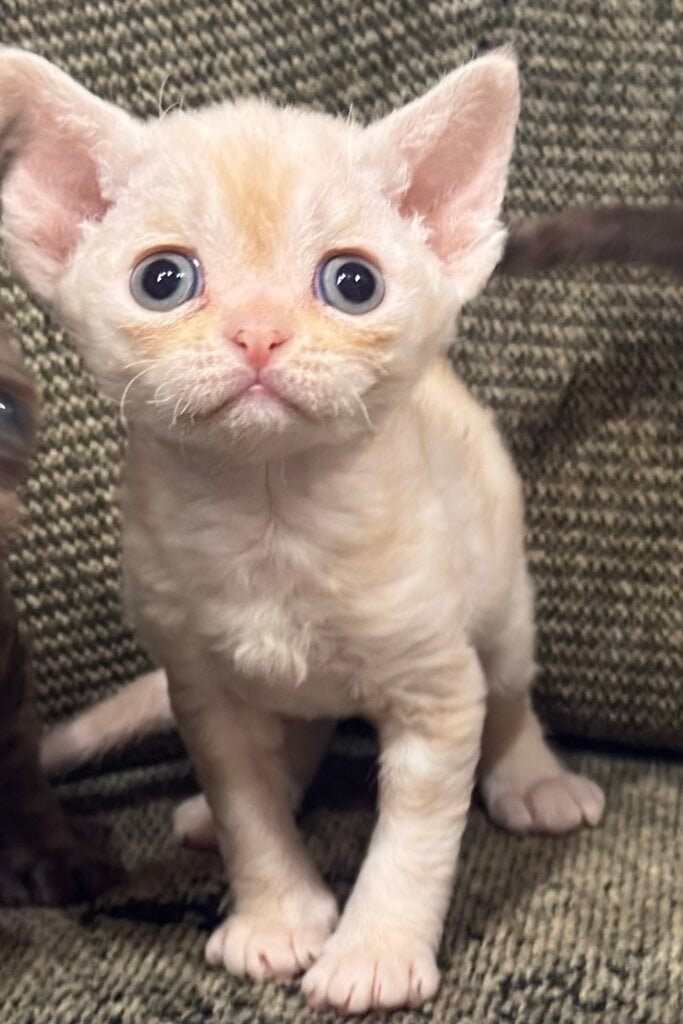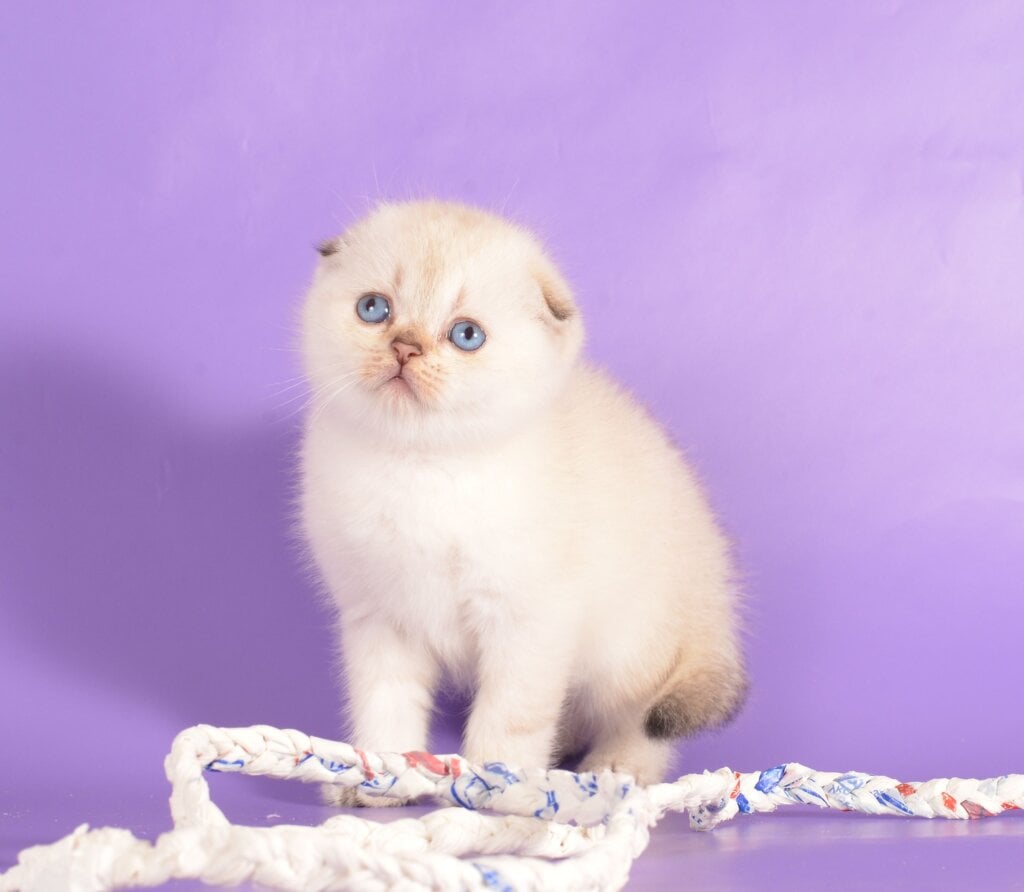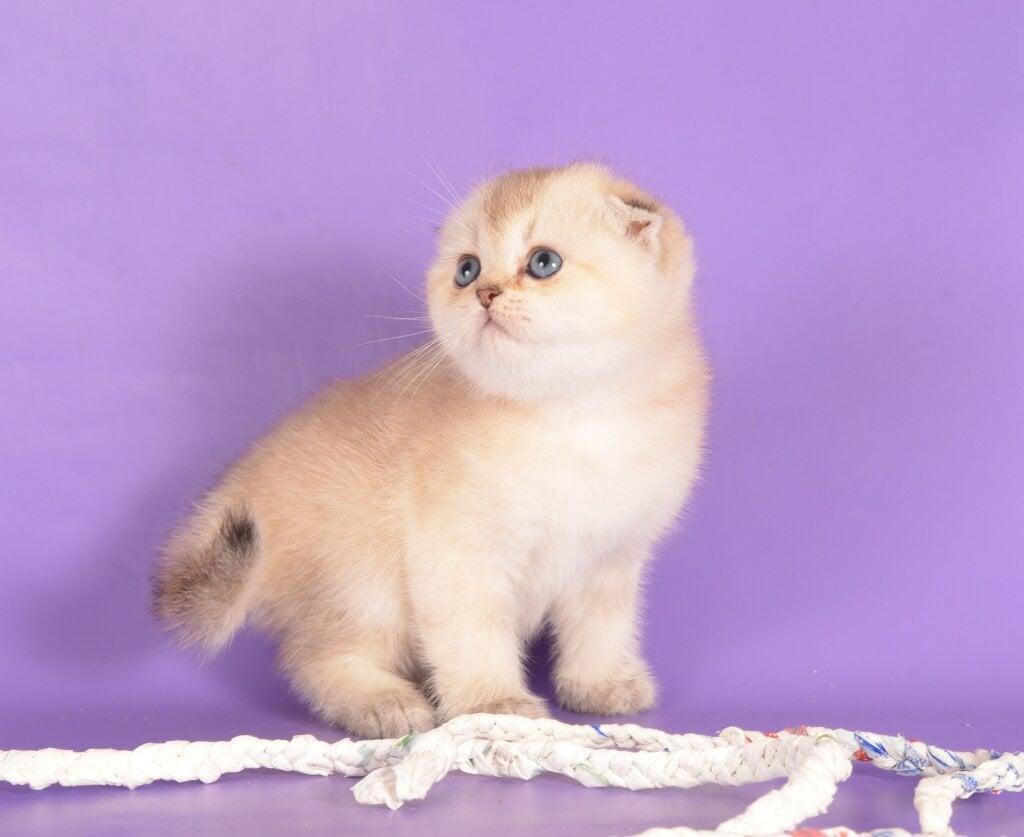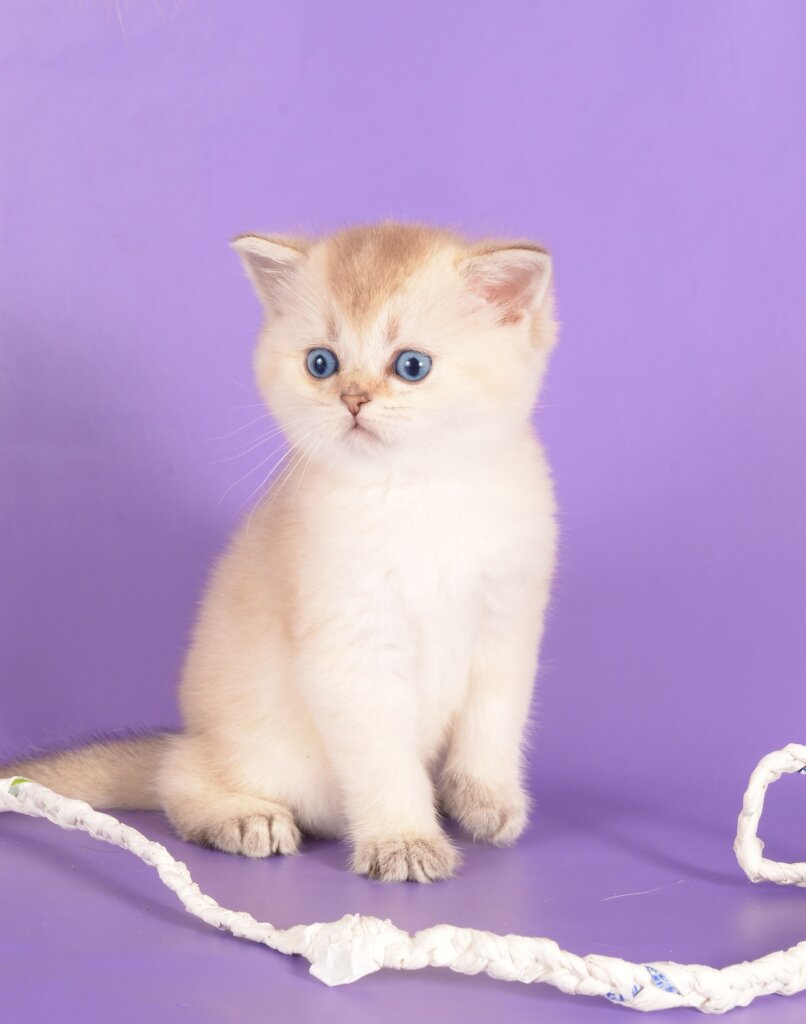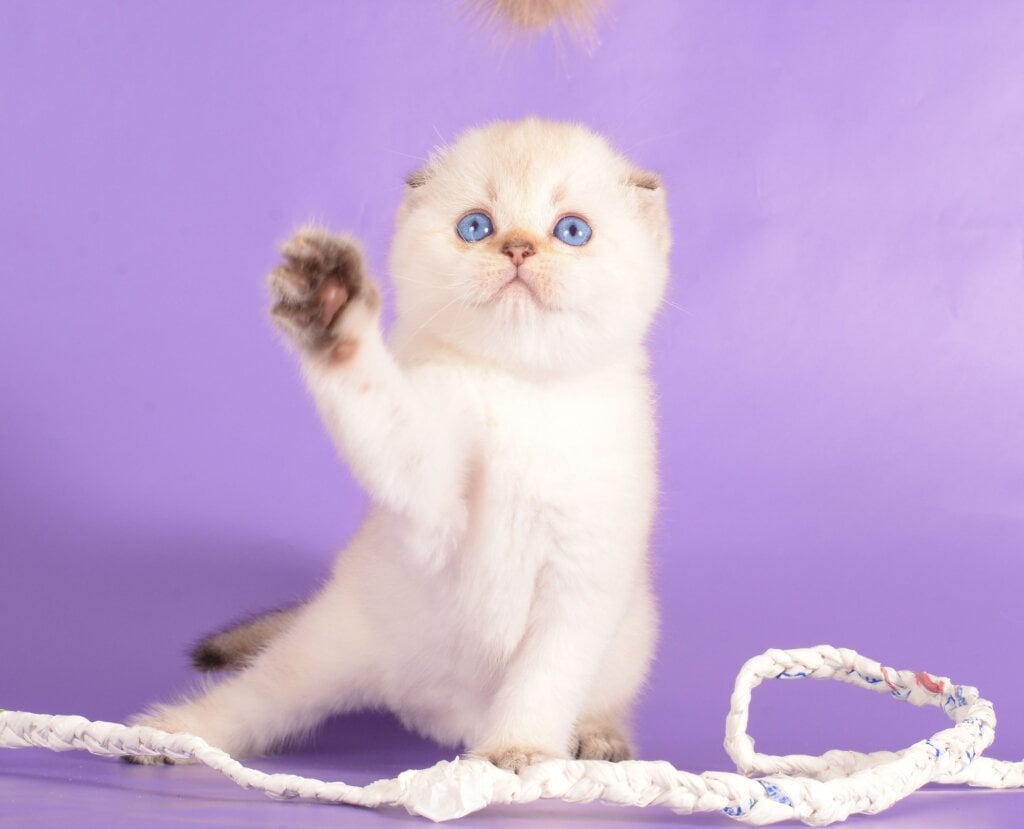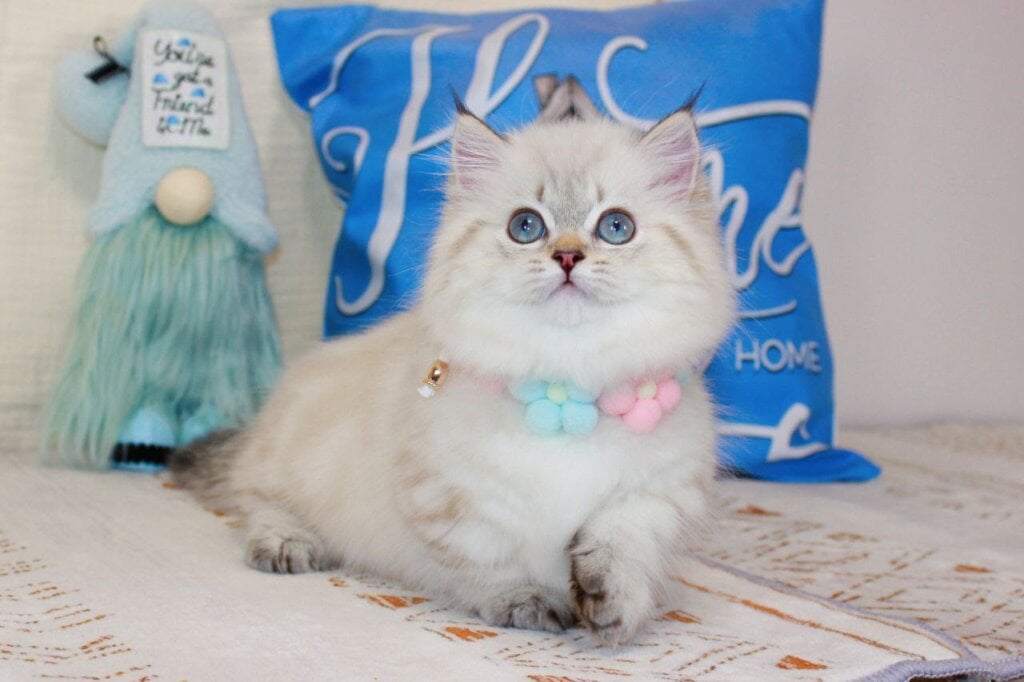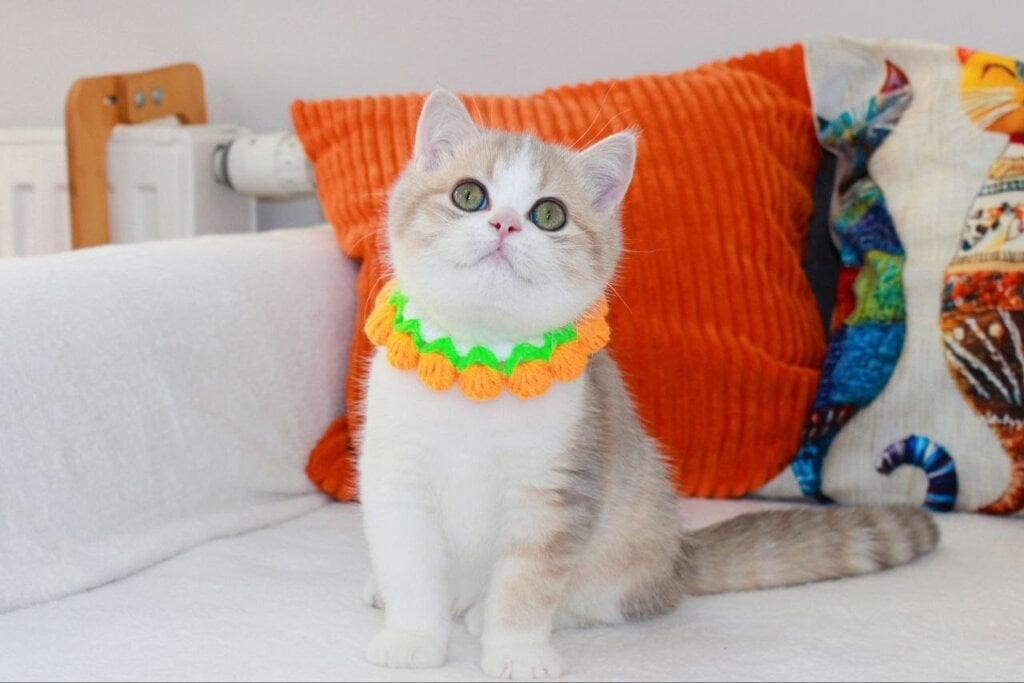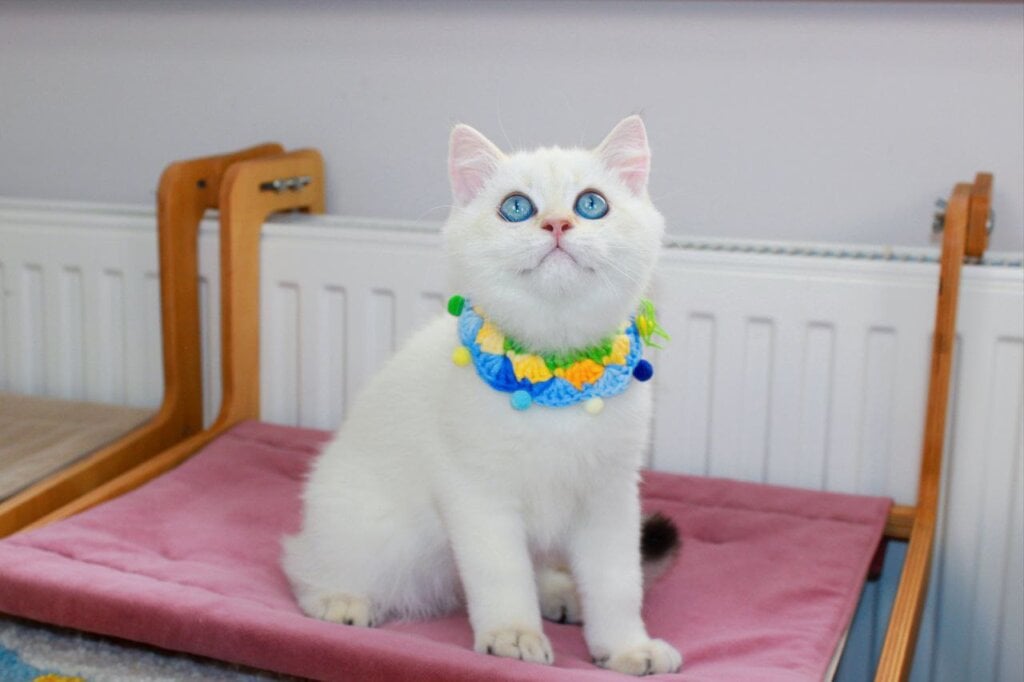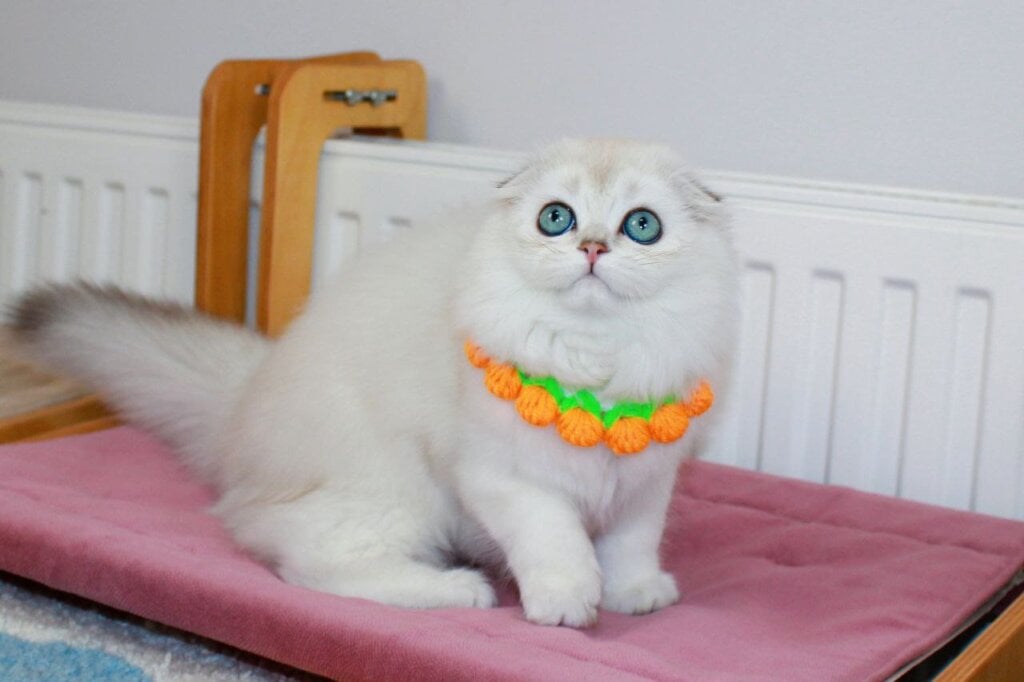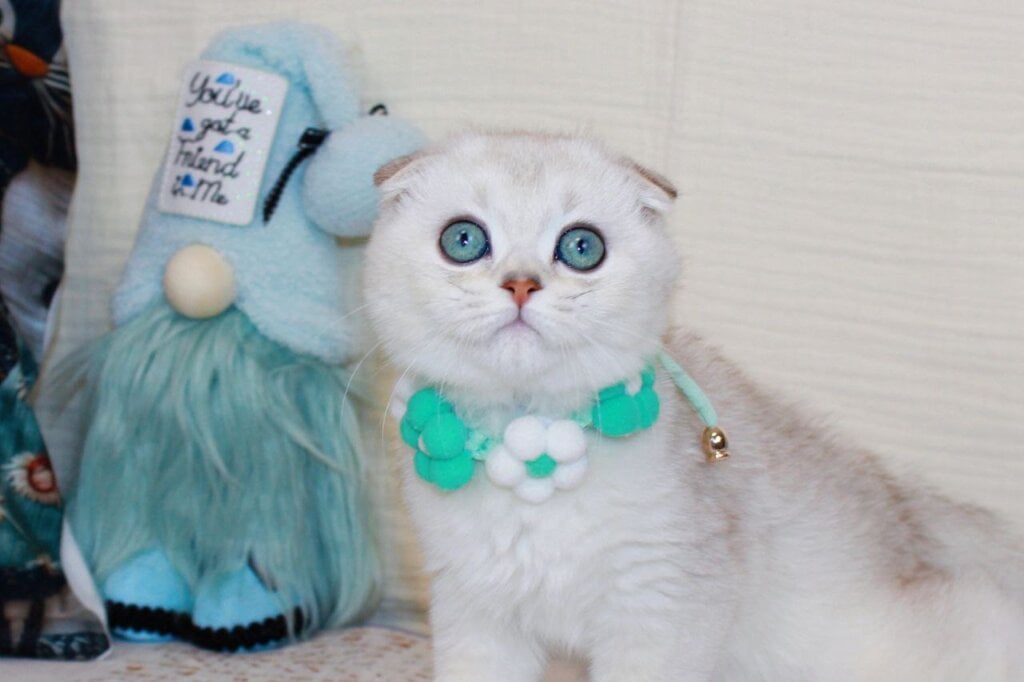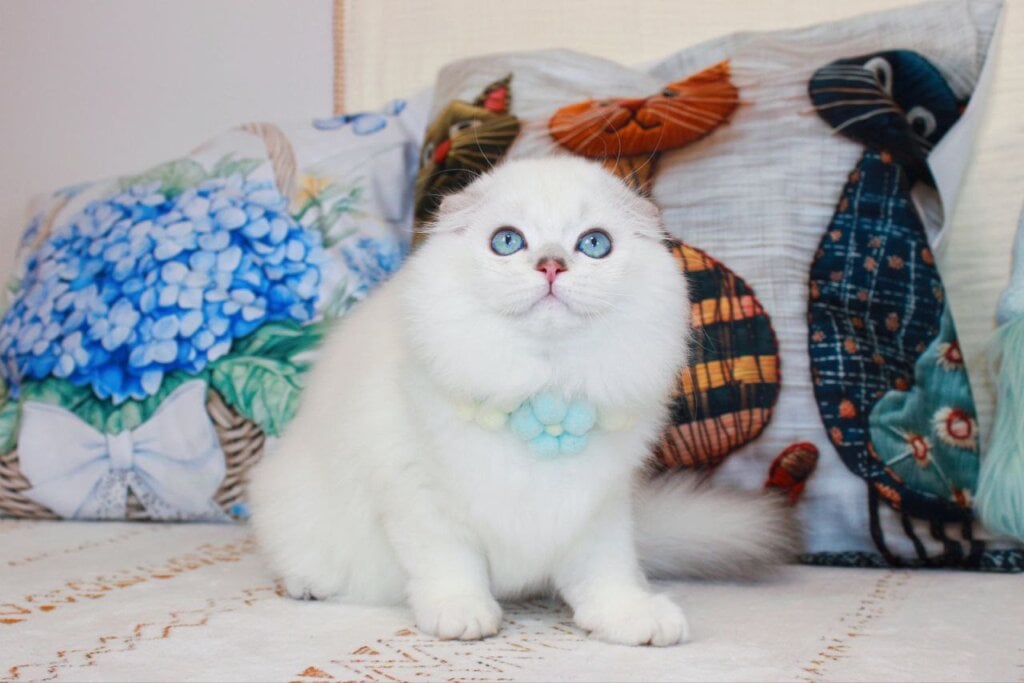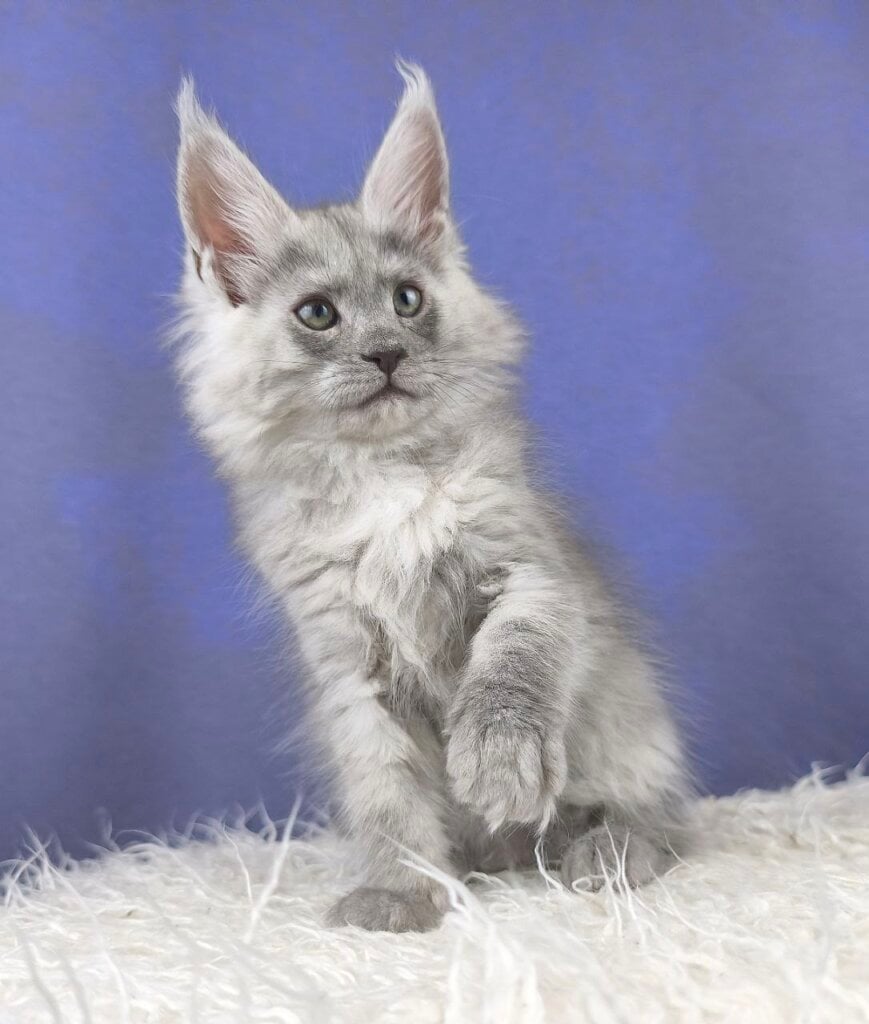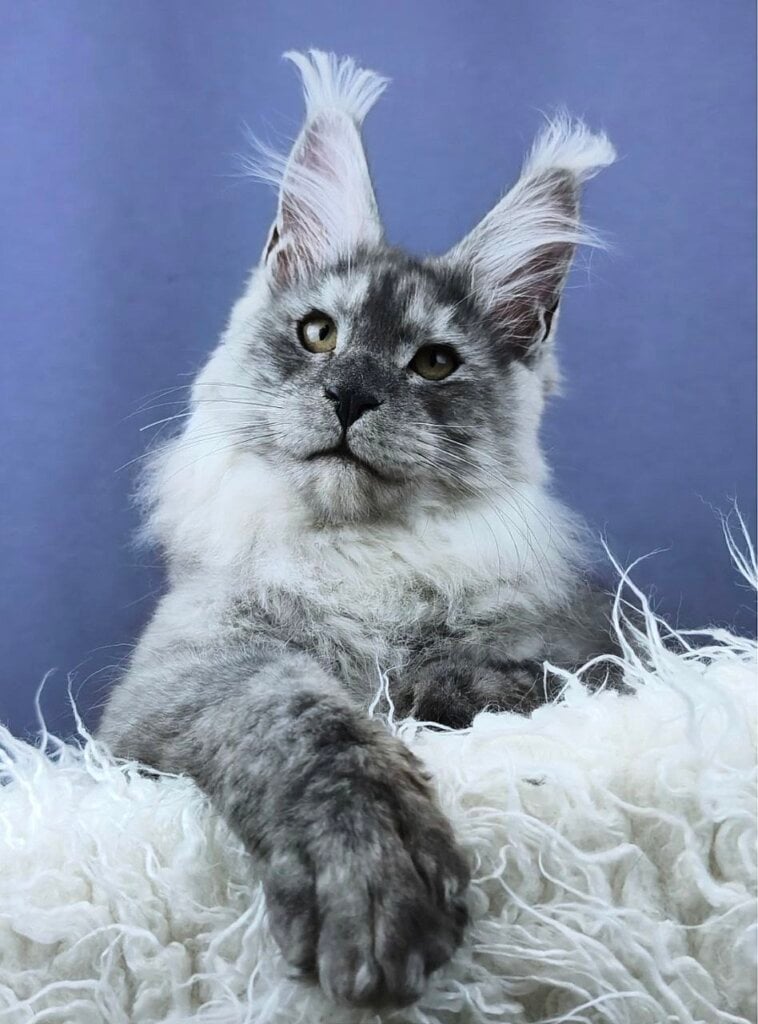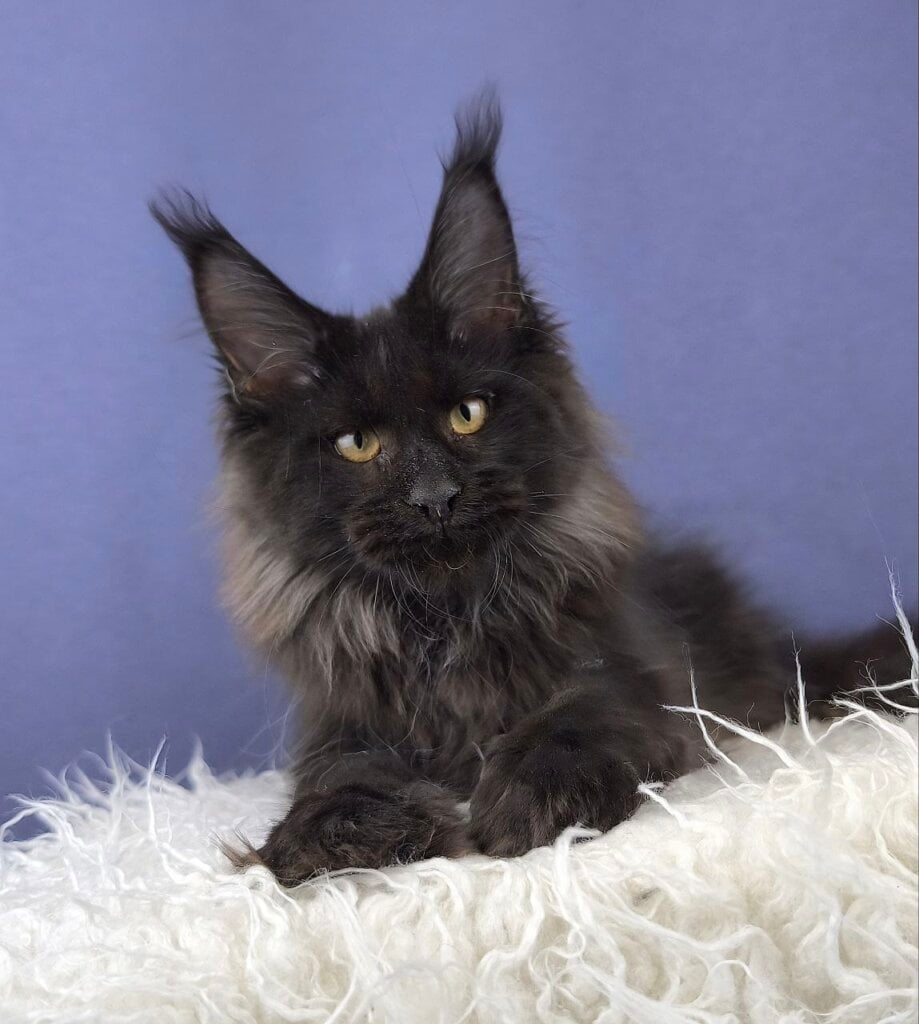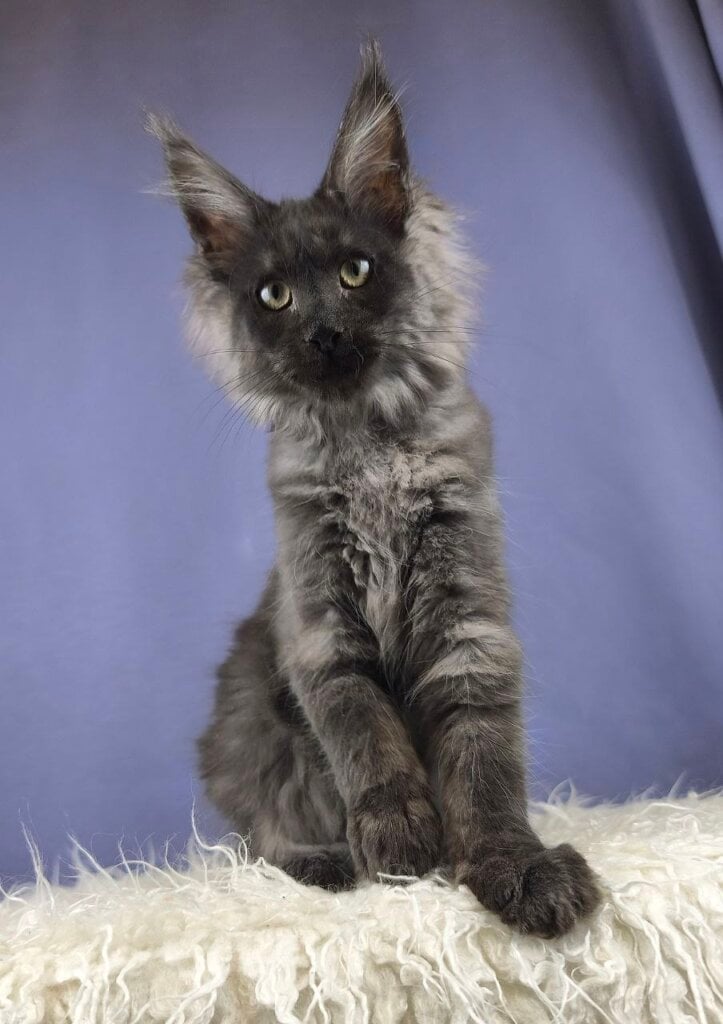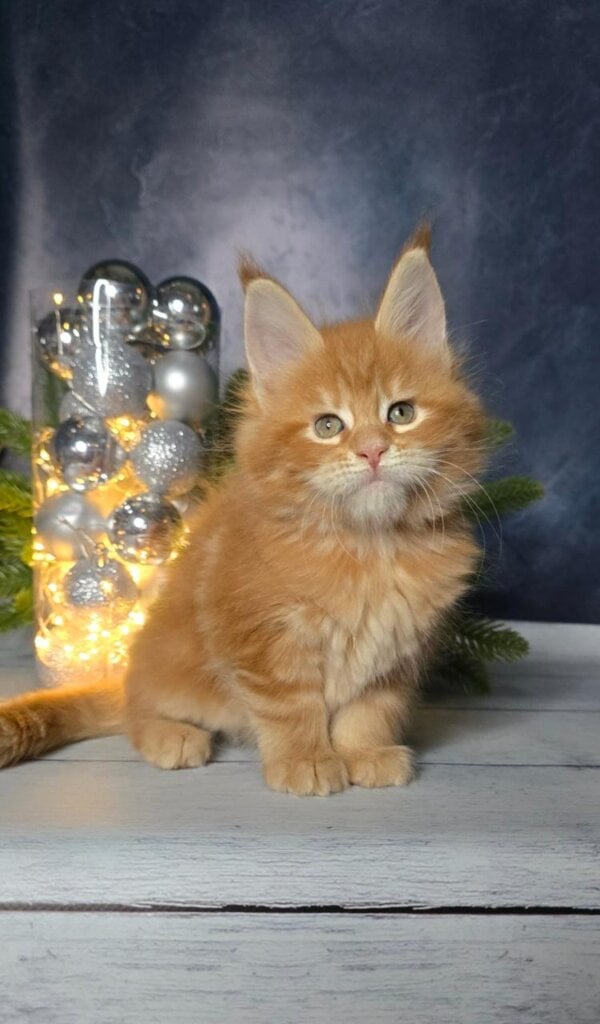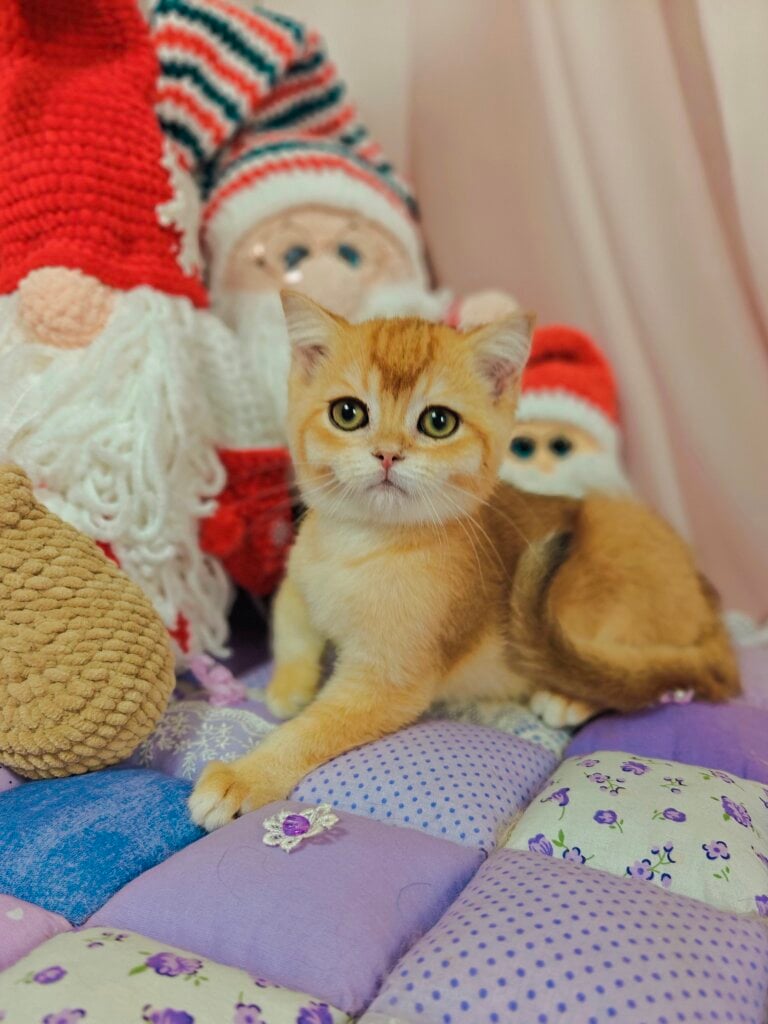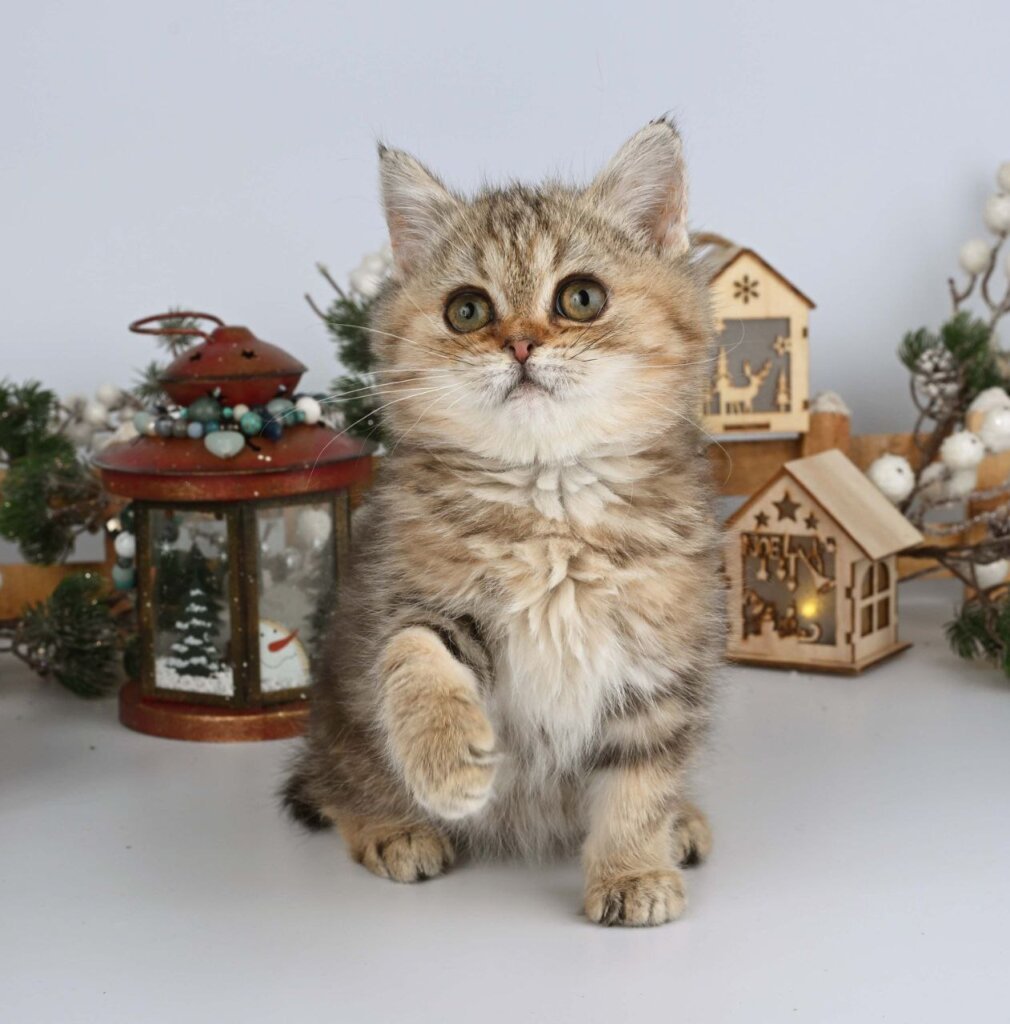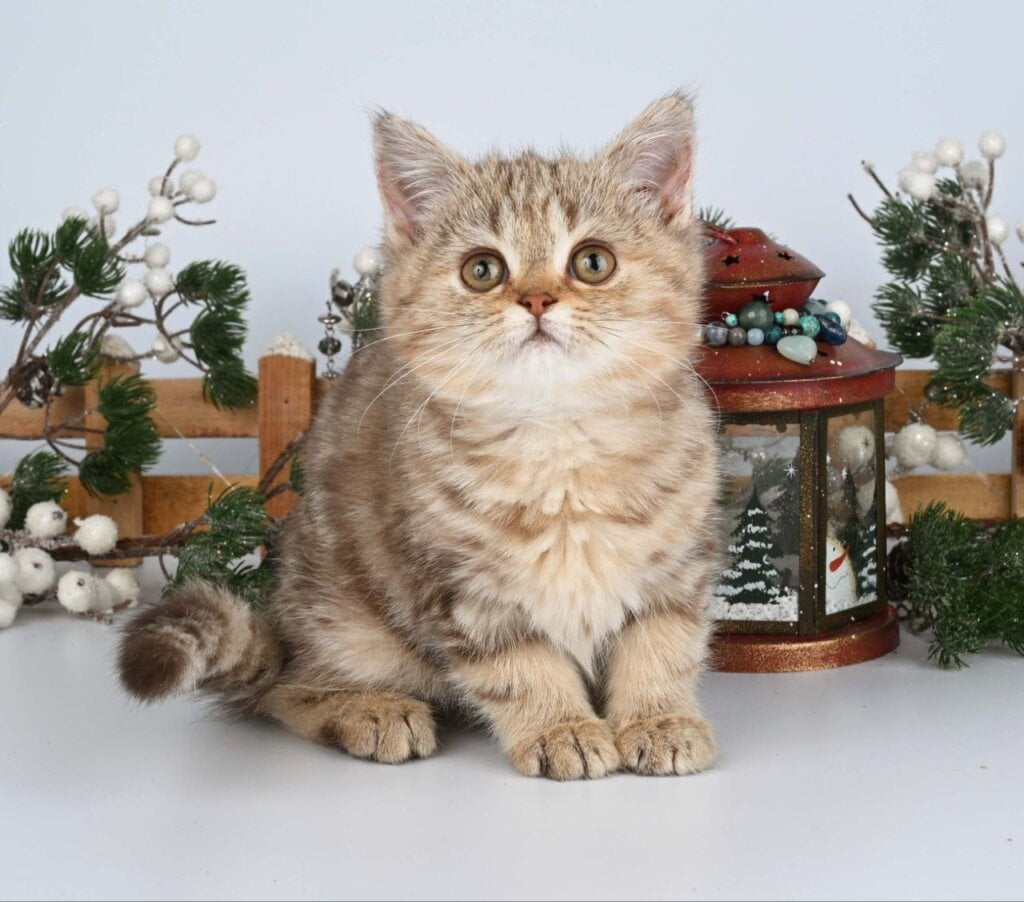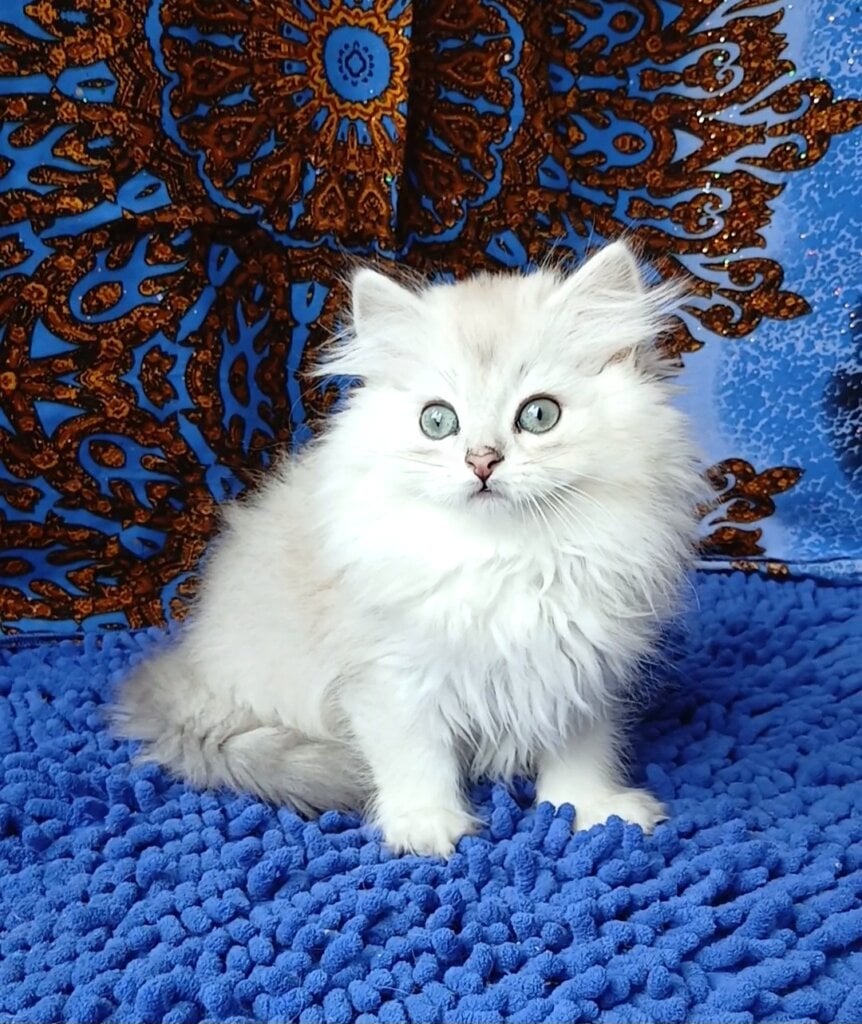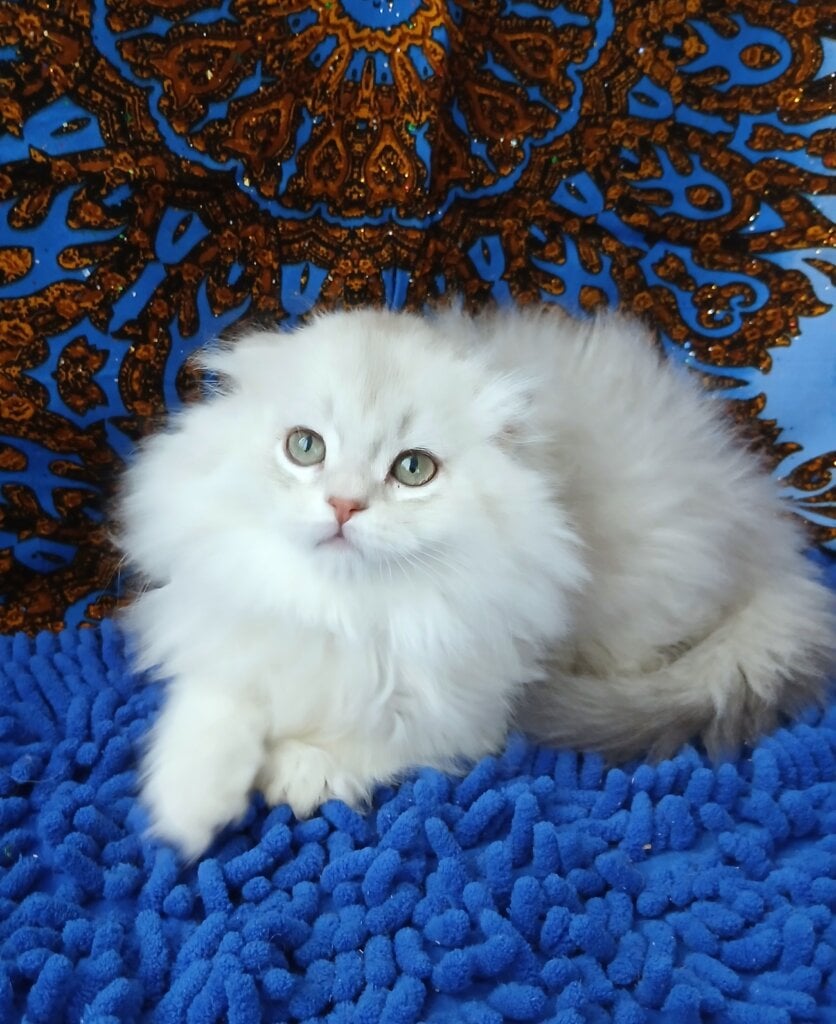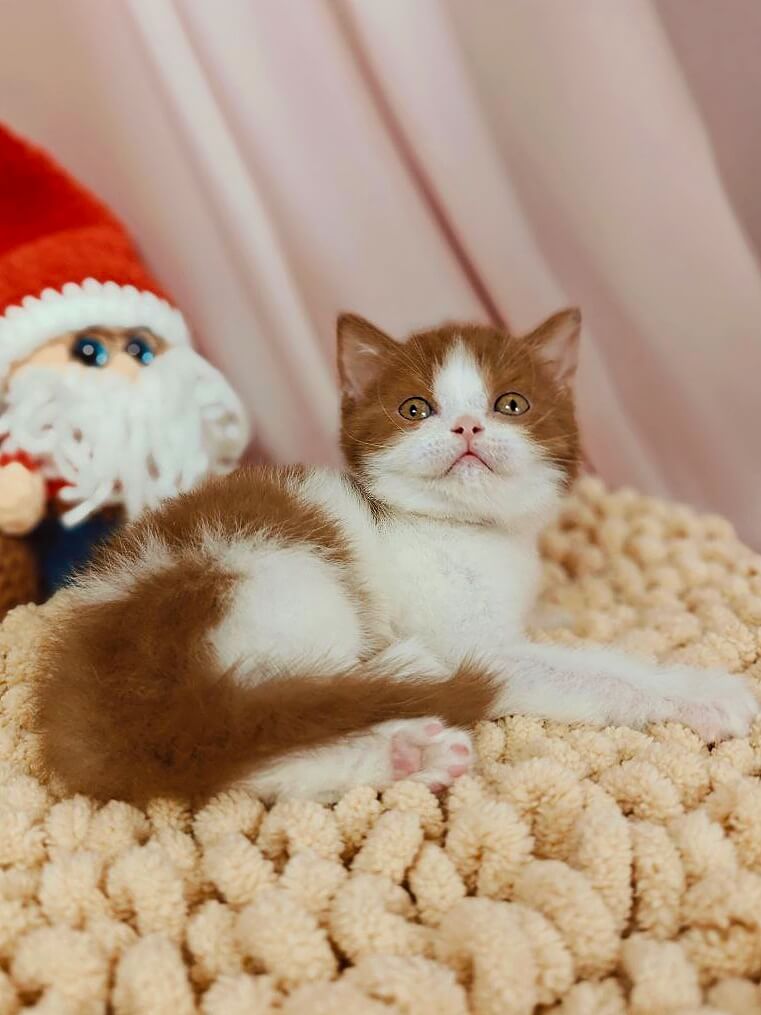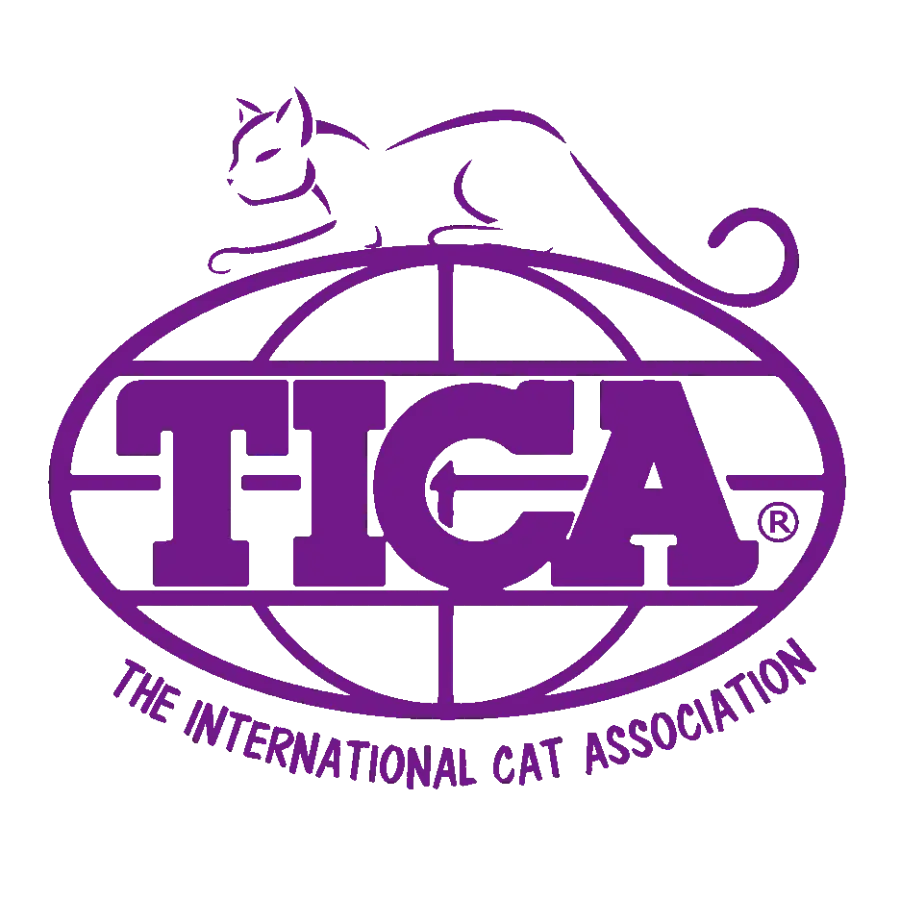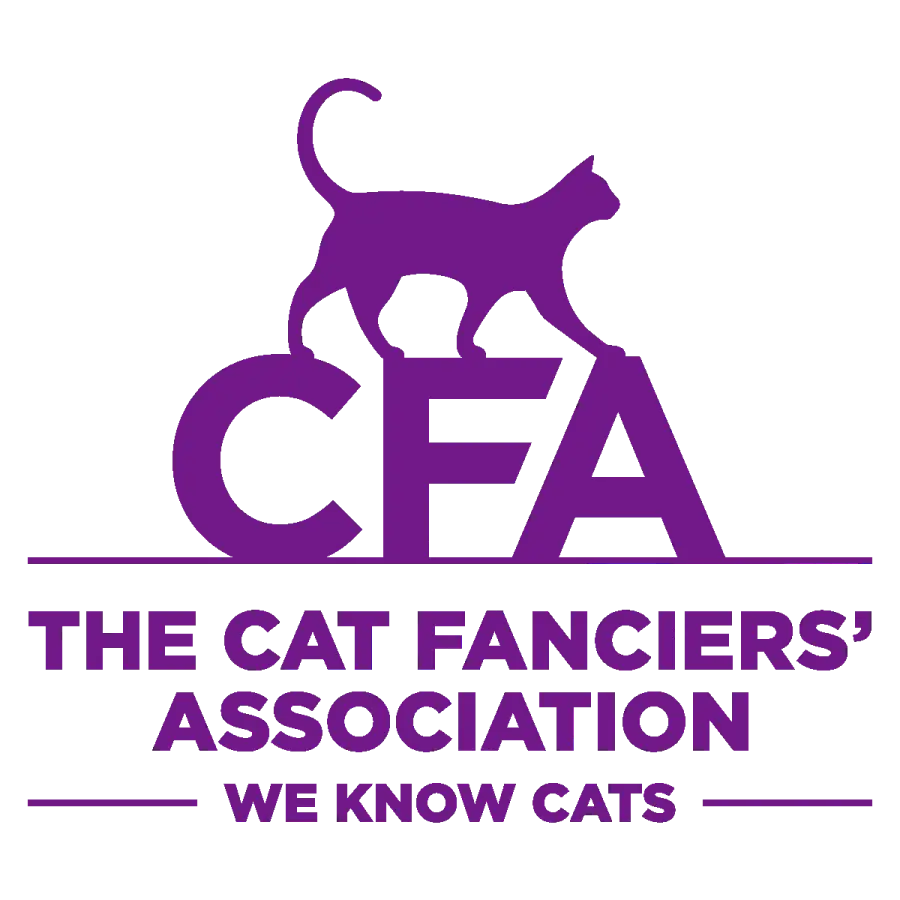Key Takeaways
- Maine Coon cats are known for their large size, tufted ears, bushy tails, and friendly demeanor, making them a distinct and beloved breed. Despite their size, Maine Coons are gentle giants with a playful disposition and affectionate nature.
- This breed has an enchanting history that’s steeped in mythology. Their development timeline eventually contributed to them achieving official recognition. They’re one of America’s oldest natural breeds.
- Social, playful, and adaptable, Maine Coons make lovely family pets, getting along well with kids and other pets. They need plenty of exercise, mental challenges and companionship to thrive.
- To maintain their luxurious coats and prevent matting, grooming should be a daily practice. Combine that with a healthy diet and routine veterinary visits to make sure they stay in peak condition and avoid genetic complications.
- Before you adopt a Maine Coon, learn what makes them special. Second, look for a good breeder or rescue to ensure you’re setting up a positive experience. They can be an excellent fit for families who value companionship and have the time to meet their care requirements.
- Maine Coons are well known for their roles in the media and their unique coat patterns. Today, this impressive breed keeps winning the hearts of cat lovers worldwide.
What Defines a Maine Coon Cat?
Maine Coon cats are well-known for their size, personality, and lovability. Just like their size, these cats are gentle giants. Their unique characteristics make them unique. Let’s take a look at some of the traits that make this incredible breed so unique.
Physical Appearance Explained
Maine Coons are best known for their huge stature and body structure. They are a medium- to long-haired breed, with a fluffy, insulating, water-repellent coat that allowed them to thrive in icy New England winters. Their distinctive rectangular body shape, along with a wide chest and muscular build, set them up for a commanding, majestic appearance.
It’s important to keep in mind that Maine Coons grow slowly, usually taking three to five years to achieve their full size. Adult males generally weigh between 18 to 25 pounds, and females between 10 to 14 pounds. Though most Maine Coons fall within the average range, some can grow significantly larger, up to 38 inches in length from nose to tail tip.
One of the Maine Coon’s most remarkable characteristics is their long, tapering tail. It’s easily recognizable, in that it is heavily furred and often compared to a raccoon’s tail in appearance. Combined with their expressive eyes, tufted ears, and lynx-like ear tips, these features complete their regal appearance and are hallmarks that make them easily recognizable.
Maine Coon Temperament and Traits
Beyond their physical attributes, Maine Coons are cherished for their charming dispositions. Maine Coons are well known for their playful dispositions, and they keep a kitten’s love of fun and tomfoolery throughout their lives. These cats are super athletic and will love activities where they can climb, jump or chase.
Though large, they are surprisingly gentle and affectionate, and they often develop strong bonds with their families. Maine Coons are sometimes called “gentle giants” for their quiet, affectionate natures. They are just as friendly and sociable, leurking behind their humans to room to room like a dog.
Their smarts and sense of adventure all combine to create an exceptional learning environment. They excel best with interactive stimulating toys and usually love leash training too!
Distinguishing Features From Similar Breeds
Maine Coons are quick to be mistaken for other long haired breeds, a number of different characteristics distinguish them. Their size is anything but cat-astrophic. They have a muscular frame and long, bushy tails.
Features that distinguish them from similar breeds such as the Norwegian Forest Cat. Their slow maturation process and unique personality traits, in their playful, dog-like behavior, combine to make them a truly one-of-a-kind companion.
History and Origins of Maine Coons
The Maine Coon cat’s history is unique amongst felines. It’s arguably the oldest natural breed in North America. Its origins lie in the northeastern United States, in what is now New England – with Maine giving the breed both its name and its fame. Maine’s state cat was made official in 1985. This popular breed has captured the hearts of thousands with its intelligence, striking good looks, and social disposition.
Early Ancestry and Development
The Maine Coon’s history can be traced back to the 1800s. Its precise ancestry remains hotly contested among scholars. Most people think the breed just came into being through natural selection in Maine’s harsh environment, flourishing as farm and ship-working cats.
Their thick, water-repellent pelts keep them warm even in the brutal winters of the North. With their big, tree-branch-sized, tufted paws, they have no problem pawing through snowy landscapes. Polydactylism, or the condition of having extra toes, was common in early Maine Coons.
Another own and icy-footed genetic characteristic allowed them to travel surer-footed on glacially frozen ground. This trait is typically found on today’s Maine Coons due to selective breeding. Yet, despite its still incomplete nature, it does provide an interesting new chapter to the breed’s storied history.
Native American Folklore Connection
Maine Coons have been cloaked in myth and folklore for ages which only adds to their allure. Another widely believed myth asserts that the breed arose from a domestic cat-raccoon hybrid. This theory is based on their bushy tails and exotic tabby markings.
A second story connects them to bobcats, citing their tufted ears and lynx-like appearance. Through these tales, the wild and majestic nature of the Maine Coon is foregrounded. They further serve to establish the breed’s iconic status within the state.
Official Breed Recognition Timeline
The Maine Coon’s time had come, as they gained greater popularity during the late 19th century, especially in early American cat shows. Despite its popularity, the breed began a rapid decline in the early 1900s as exotic long-haired breeds from abroad started to take the spotlight.
By the mid-20th century, devoted breeders were making an incredible effort to save the Maine Coon. Their work succeeded first when the cat was officially recognized by leading associations in the 1970s. Today, this large and shaggy-haired breed is still one of the most favored breeds in the United States and around the world.
Evolution of Breed Standards
These are only a few examples of the changes Maine Coons have gone through in the last 40 years, when it comes to breed standards. Today, Maine Coons are known for their impressive size, muscular frames, and long, shaggy fur.
They are screened for hereditary conditions, including hypertrophic cardiomyopathy (HCM), with studies showing a 10.1% breed prevalence rate. Such a commitment to health and ethical breeding means the breed has a bright future.

Maine Coons as Family Pets
Known for their large size, genius level intelligence, and outrageous personalities, Maine Coons are larger than life. These nearly perfect attributes give them the potential to be excellent family pets. They adjust wonderfully to a variety of household environments.
Whether you’re a bustling family with kids or a quiet household of adults, these goofballs will harmoniously blend into their surroundings. Here’s a look at some of the most important facets of their care, along with their unique traits that make them such exceptional family companions.
Exercise and Play Needs
Though Maine Coons are a pretty laid back, more medium active breed, their playful “kitten at heart” attitude continues well into their senior years. Their playful side, combined with their natural athleticism, means they can have fun with chasing feathered toys or climbing cat trees.
Physical activity needs to be part of their daily life since they are susceptible to obesity. Games such as fetch or stimulating play activities will ensure that they stay healthy and prevent them from becoming bored. For instance, play with a laser pointer or with dangling toys to exercise their predator instincts and get them active.
Despite their size, Maine Coons are very powerful and agile, making them effective climbers. In order to keep them in great physical condition, give them vertical space such as shelves or tall cat trees.
Mental Stimulation Activities
Maine Coons are among the most intelligent breeds and need plenty of mental stimulation in their lives. Whether they’re learning how to do tricks, work through puzzle feeders, or understanding commands “sit” or “stay,” there’s so much they can learn!
Mental stimulation is especially key to avoiding boredom, which can cause negative behaviors such as destruction. An interactive treat-dispensing ball or a game of Hide the Treats can go a long way to keeping their minds sharp.
Rotating toys and introducing new challenges on a frequent basis helps to keep them interested and encourages them to stay curious. Their eagerness to please makes training a fun experience for both the cat and his family.
Socialization with Family and Other Pets
Affectionate and gentle, Maine Coons are great companions for families with kids. They tend to be very sociable cats, developing deep attachments with their people and following them about the home while demanding more attention.
Their tolerance and loyalty extends to other animals – dogs included – making them the perfect fit for homes with multiple pets. They curl up with the family dog or welcome guests at the door and prove to be a gentle giant.
Indoor vs. Outdoor Living Considerations
Maine Coons are best suited as indoor companions. Their playful and social nature really shines when they are protected from outdoor hazards. Many owners consider allowing them to spend time outdoors under supervision in an enclosed yard or using supervised leash training to explore.
Yet the pets’ outer coat, combined with their trusting hearts, require 24-hour monitoring. Indoors, they make excellent pets provided they are well-enriched – scratching posts, vertical spaces, and plenty of interactive play time.
Essential Maine Coon Care Guide
With their majestic appearance and impressive size, Maine Coons are some of the most popular felines in the world. Their friendly demeanor truly contributes to their popularity among cat enthusiasts. Appropriate care is a must to make sure they prosper in a house setting.
Here’s what to know about grooming, nutrition, health, and preventative care strategies for your Maine Coon.
Grooming Best Practices
A Maine Coon’s beautiful natural double coat deserves all the love and care in the world. Weekly brushing is essential to avoid painful matting, minimize shedding, and keep his luxurious fur coat in tip-top shape. A steel comb or slicker brush will be most effective in ensuring you get down to the thick undercoat.
Regular grooming, especially in shedding seasons, can reduce the likelihood of hairballs – which are typical in long-haired breeds. As an example, if your Maine Coon is going through heavy shedding during spring, brushing two or three times a week would probably be the best option.
Regularly trimming their nails and cleaning their ears when required will keep them healthy and clean. A gentle, cat-safe ear cleaner will help prevent wax buildup and infections, which Maine Coons – blessed with large, tufted ears – are prone to.
Nutritional Needs for Optimal Health
Maine Coons do best on a diet high in protein. Ensure a minimum of 80% of their diet is made up of food that includes meat or muscle-based proteins. Balanced nutrients in either high-quality wet or dry food help keep their large frame and active lifestyle in tip-top shape.
Giving them some variety with things like cooked dander free chicken or fish (unseasoned) would help give them some variety while still fulfilling their dietary needs. Portion control is just as important, with inviting obesity and related lifestyle illnesses into their lives if they’re overfed.
Making sure they always have access to fresh, clean water – especially important for kitties on a dry food diet – keeps them hydrated.
Recognizing Potential Health Problems
Maine Coons are predisposed to a few hereditary conditions, most commonly hip dysplasia and hypertrophic cardiomyopathy (HCM). Regular veterinary check-ups and genetic screening of parent cats help reduce the risk.
Be on the lookout for signs such as limping, lethargy, or trouble breathing, and bring your Maine Coon to a vet right away if you have any concerns.
Preventative Healthcare Strategies
Regular exercise, diet, and vaccinations go a long way in preventing health issues. Maine Coons need challenging toys or climbing structures to exercise their sharp intelligence and keep them physically healthy.
Properly socializing them early on with other household pets will help prevent territorial aggression, making for an amicable coexistence within the home.

Maine Coon Health Considerations
The Maine Coon truly is one of the most popular breeds, adored for its sweet temperament and impressive good looks. Maine Coons are typically healthy cats, but their size and genetic background contribute to their risk of particular diseases and illnesses. By being aware of these concerns and being proactive, you can help ensure that your Maine Coon has a long and healthy life.
Common Genetic Health Issues
Outcomes of clinical significance Spinal muscular atrophy (SMA) represents one of the clearest, most striking disorders. It disrupts muscle signaling, resulting in uncontrollable tremors and difficulty holding an upright posture. This can be a particular problem considering the breed’s highly active personality and restless spirit.
Hypertrophic cardiomyopathy (HCM) is a frequent worry. This metabolic heart condition is often the result of an overactive thyroid known as hyperthyroidism. It affects adult and senior Maine Coons and may result in lethargy or respiratory distress.
Conditions such as hip dysplasia – more prevalent in larger breeds – can lead to joint pain or stiffness, reducing mobility as your cat ages.
Dental health is the next focus area. Aside from congenital defects, Maine Coons are prone to tartar build-up and tooth damage. This can lead to stomatitis, marked inflammation, and pain when eating. It’s a good idea to brush their teeth at least two or three times a week to support their oral hygiene.
Genetic considerations include being aware of polycystic kidney disease (PKD) and genetic deafness. DNA testing is an excellent resource for their early detection.
Early Detection and Management
Identifying symptoms quickly can go a long way in preventing serious health complications. Symptoms such as lethargy, increased sleeping, or mental confusion may be signs of heart disease or thyroid disease.
Skin problems like excessive scratching or areas of missing or cropped fur can indicate allergies or other health concerns. Obesity is a secondary risk, as overfeeding just 20% more than their caloric requirement can rapidly result in complications related to obesity.
It’s important to keep a close eye on your Maine Coon’s diet and activity level to ensure they stay at a healthy weight.
Working with a Veterinarian
Working closely with a knowledgeable and trusted veterinarian is the best way to tackle these health concerns. Regular check-ups, with cardiac ultrasounds for adult and senior kitties, can catch early signs of hypertrophic cardiomyopathy before major changes take place.
Regular dental cleanings and some good advice about diet and exercise will go a long way to ensuring your Maine Coon is healthy and happy.
Maine Coons in Popular Culture
Maine Coons have been popular with popular culture for quite some time. Their combination of their appearance and their personality is what makes them so wonderful. With their remarkable size and dog-like playful demeanor, these gentle giants quickly become your most interesting, cutie pie companions. Their unique look further guarantees they’ll make an impression wherever they are.
Their cultural significance is best explored through notable individuals, media portrayals, and their influence on breed popularity.
Notable Maine Coon Personalities
Fictional Maine Coons have cemented their pop culture legacy through their amazing attributes and fantastic humans. One of the most prominent examples is this character, Stewie, a Maine Coon. He was a real Maine Coon who held the Guinness World Record for longest domestic cat at over 48 inches nose to tail tip. His relaxed demeanor and loving spirit won the hearts of millions around the world.
Another notable is Ludo, yet another record holder for being one of the biggest Maine Coons in the world, at over 34 lbs. These stunning cats are the perfect representation of the breed’s notoriety for their huge size and sweet personality.
Compelling historical anecdotes further pump up their appeal. Many believe that Maine Coons descended from Viking ship cats, specifically the Norwegian Forest cats, which highlights their robust build and adaptable nature. Their history is rich with folklore, making them all the more legendary in the eyes of cat lovers.
Maine Coons in Media Appearances
The Maine Coon’s more imposing stature, coupled with an endearing personality, has made them mainstays of television, film, and literature. One Maine Coon played the character of Mrs. Norris, the loyal feline of Argus Filch. This character also stars in the Harry Potter film series. Their ‘lion-like’ mane and expressive eyes, to say nothing of their charismatic personalities, made them doubly captivating on-screen.
Maine Coons commonly have leading roles in commercials and brighten up our social media feeds. Their cute little pranks and snuggly ways always win hearts and inspire smiles. Their dog-like traits, such as following their owners around the house and being highly loyal, are mesmerizing.
These traits resonate with audiences who typically don’t consider bringing home a feline friend.
Impact on Breed Popularity
Their media presence, coupled with their awesome quirkiness, has continued to launch the Maine Coon to new heights of popularity. Highly prized for their intelligence, playfulness, and athleticism, they are irresistible to families and individuals who want a fun-loving and interactive companion.
Their slow growth rate reaches maturity in upwards of 5 years. That cavalier quality is what keeps this breed so kitten-like for so long.

Maine Coon Colors and Patterns
Maine Coons are known celebrities among cat breeds, with their huge stature and dog-like personalities. Their coat comes in the same dazzling variety of colors and patterns! The Cat Fanciers’ Association (CFA) and The International Cat Association (TICA) both recognize more than 80 different combinations of these kitties.
What really makes Maine Coons so special is their diverse, gorgeous looks. Let’s take a look at the common Maine Coon colors and patterns, the genetic mechanics behind these colors, and their captivating eye colors.
Common Coat Variations
Along with their charming personalities, Maine Coons are known for a wide variety of colors and patterns that further delight cat lovers. Tabby is perhaps the most recognizable of cat patterns. It takes its inspiration from its ancestors, the original Maine Coons found in Maine in the 1800s.
With horizontal, vertical or swirling lines or spots, tabby Maine Coons definitely go for a one of a kind patterned appearance. Black and white Maine Coons, sometimes referred to as “tuxedo Maine Coons,” are popular thanks to their sleek, dignified, formal aesthetic.
Torties, short for tortoiseshell Maine Coons, are a favorite among audiences for their rich combination of black and red hues. One of the most notable quirks of torties is that they’re almost exclusively female, since the gene that causes this color pattern is carried on the X chromosome.
Likewise, calico Maine Coons have white intermixed with red and black and exhibit the same genetic phenomenon. Smoke Maine Coons, their silvery, silver-tipped fur commanding attention at international cat shows, always are the head turners. The most notable of these has to be the black tortie, a color that makes a fierce and dramatic statement.
Genetics Behind Coat Colors
The vast coat variations seen in Maine Coons stem from a combination of dominant and recessive genes. The red (commonly referred to as “orange”) Maine Coon owes its color to a sex-linked gene, making male red cats more common than females.
Patterns like tabby are often dominant, meaning they appear more frequently. Unique combinations, such as smoke or solid black, result from recessive genes, which require both parents to carry specific traits.
Eye Color Variations
Maine Coon eye colors are just as mesmerizing. They can be gold, green, blue, or mixtures thereof, even odd-eyed (two different colors). These variations are determined by genes and sometimes correspond to specific coat colors.
As an example, white Maine Coons are likely to have blue or odd-eyed expressions, as compared to their darker-coated fellows.
Is a Maine Coon Right for You?
Maine Coon cats are instantly recognizable for their size, amiable nature, and quiet demeanor. Selecting the ideal companion is about more than looks or their general characteristics. It’s essential to consider your lifestyle, understand the breed’s specific needs, and ensure you’re working with a reputable breeder or rescue.
Assessing Your Lifestyle and Home
Begin by considering your living space and lifestyle. This guide will ensure that you choose a Maine Coon that’s right for you. These cats do best in households where they can be around and play with humans as well as other pets.
Their friendly and easy-going natures make them the perfect addition to homes with kids – or even homes with dogs! They’re dogs in cat form – friendly, family-oriented, and thrive on companionship. If you want a lap cat, they aren’t the right breed for you as they love to sit next to you but not on you.
Maine Coons are low on grooming compared to other long-haired breeds. You’ll only need to brush them a few times a week – once is ideal – to maintain their coat and reduce their shedding. If you suffer from allergies, it’s worth mentioning that they are not hypoallergenic.
Their largely quiet demeanor is an added benefit to anyone seeking a peaceful place to live. They almost don’t meow at all, preferring to express themselves with gentle chirps and trills.
Understanding Breed-Specific Needs
Maine Coons do not have any unique dietary or exercise requirements. Of course, you need to feed them the right diet and provide ample opportunities for exercise! These cats crave vigorous, highly engaging active play.
They require a stimulating indoor environment, including climbing trees and scratching posts, to keep them mentally occupied. They can register ages from 9 to 15 years, on average. Their health and longevity are hugely influenced by their diet, regular veterinary care, and exercise.
First, consider their size. Maine Coons can weigh 18 pounds and up. You’ll want to invest in more durable furniture and in extra-large litter boxes.
These calm giants of the cat world are gentle and easygoing despite being large, making them a charming addition to many households. If you are in the market for a super high-maintenance or needy animal, this breed isn’t gonna cut it.
Finding a Reputable Breeder or Rescue
It’s important to make sure you’re adopting from responsible breeders or rescues. Quality breeders put great emphasis on the health of their cats. They recently launched a genetic and health screening program so that all of their kittens are free from hereditary conditions.
Maine Coon rescues help ensure these affectionate felines are given the opportunity to go to their forever homes. That makes them a perfect choice for those wanting to adopt.
